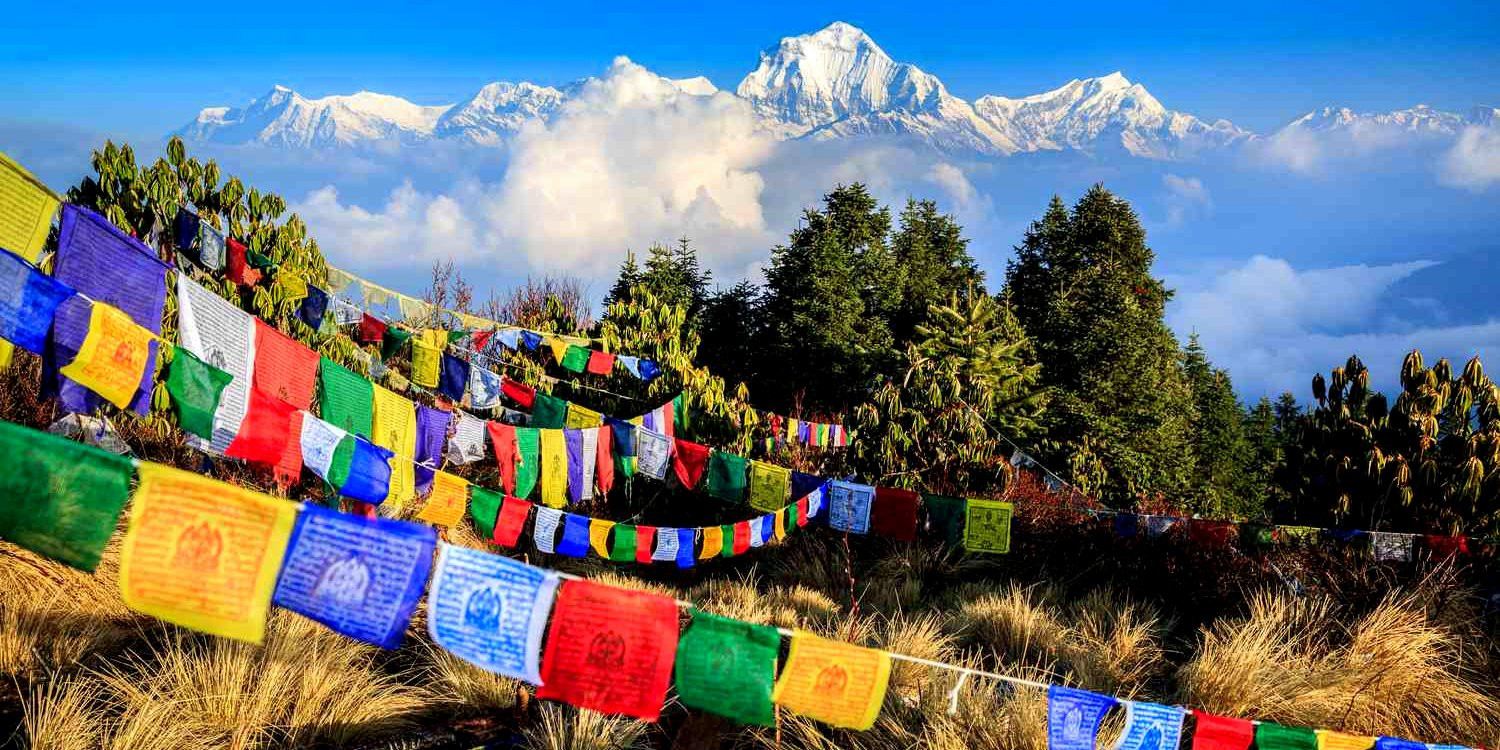Kathmandu Valley Tourism
Kathmandu Valley, nestled in the heart of Nepal, offers a captivating blend of ancient history, vibrant culture, and stunning architecture, making it a must-visit destination for travellers from around the world. Here's why Kathmandu Valley tourism is so enriching:
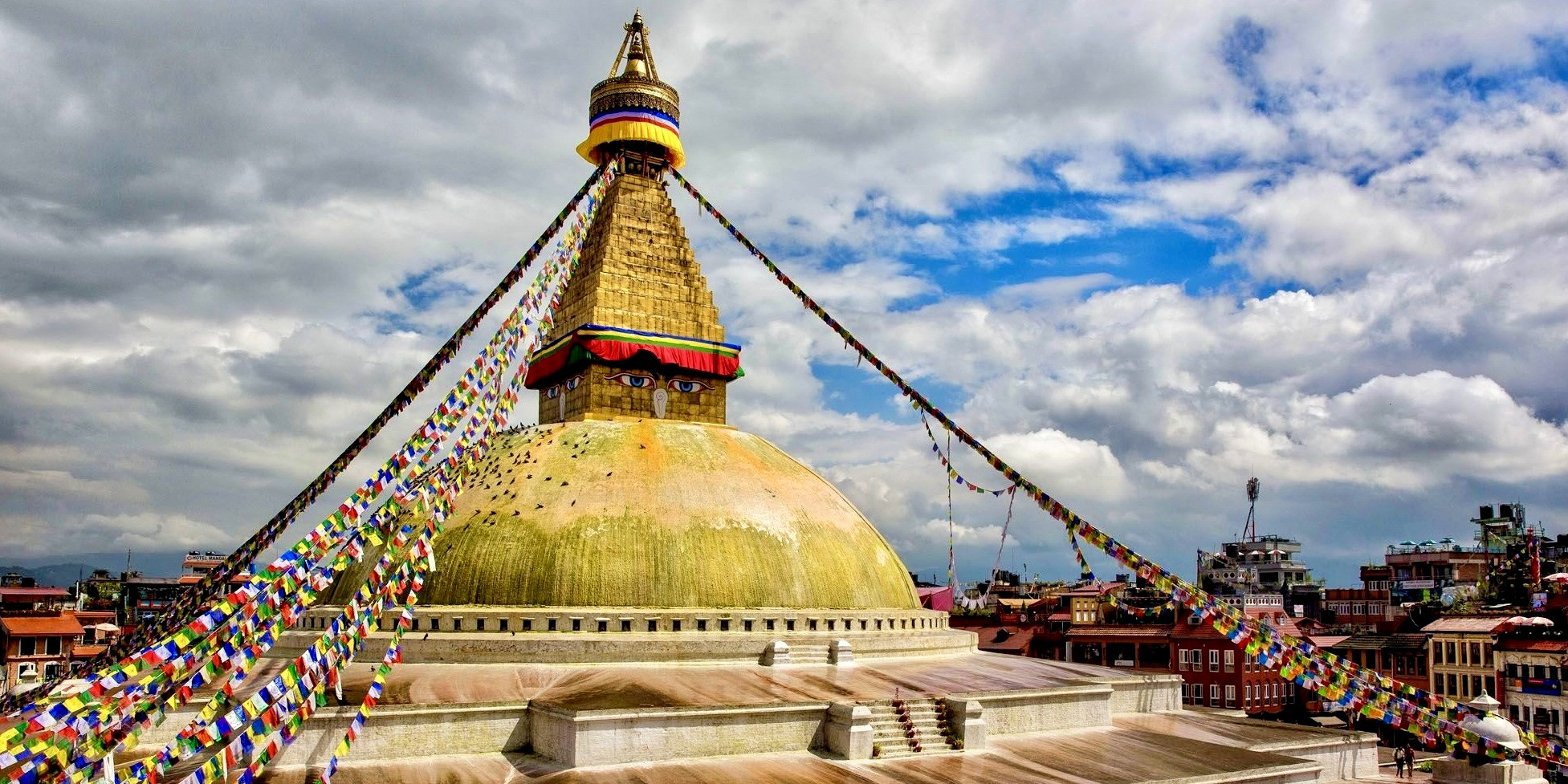
-
Historical Richness: Kathmandu Valley is home to seven UNESCO World Heritage Sites, making it a treasure trove for history buffs. The iconic Durbar Squares of Kathmandu, Patan, and Bhaktapur boast palaces, temples, and courtyards that date back centuries. Each square tells its own story of royal dynasties, religious devotion, and artistic heritage.
-
Cultural Diversity: The valley is a melting pot of various cultures and religions. Here, Hinduism and Buddhism intertwine seamlessly, as seen in the harmony of temples and stupas scattered throughout the area. Festivals like Indra Jatra, Dashain, and Tihar are celebrated with great pomp, showcasing the rich traditions and vibrant lifestyle of the locals.
-
Artistic Heritage: Kathmandu is renowned for its exquisite art and architecture. The traditional Newari wood carvings and the intricately designed pagoda-style temples reflect the skilled craftsmanship of the Kathmandu Valley. Museums like the Patan Museum and the National Museum of Nepal offer insights into the artistic history and archaeological past of the region.
-
Spiritual Experiences: For those seeking spiritual growth, the valley provides numerous sacred sites. The peaceful Swayambhunath Stupa (Monkey Temple) and the majestic Boudhanath Stupa are centres of Buddhist worship and meditation. Pashupatinath Temple, a holy site for Hindus, draws thousands of pilgrims each year, offering a unique glimpse into the spiritual practices and rituals of Nepalese society.
-
Adventure and Leisure: Besides cultural tours, Kathmandu Valley offers a variety of leisure activities. You can explore the local markets like Asan for traditional goods, enjoy authentic Newari cuisine, or experience the nightlife in Thamel. For the more adventurous, the surrounding hills like Nagarjun and Shivapuri provide excellent hiking and bird-watching opportunities.
-
Accessibility and Accommodations: Kathmandu Valley is easily accessible, with Tribhuvan International Airport serving as the main gateway. The valley offers a range of accommodations, from luxurious hotels to comfortable guesthouses, catering to all budgets and preferences.
Kathmandu Valley tourism by Relax Getaways ensures an immersive experience that combines the delights of Nepalese hospitality with the profound beauty of its heritage. Whether you're exploring ancient sites, participating in local festivals, or enjoying the natural landscapes, Kathmandu Valley stands as a testament to Nepal's allure, promising unforgettable memories for every traveller.
Visit Pokhara
Pokhara, nestled at the base of the Annapurna Himalayan range, is one of Nepal's most picturesque and popular tourist destinations. Here’s why a visit to Pokhara is a must for anyone travelling to Nepal:
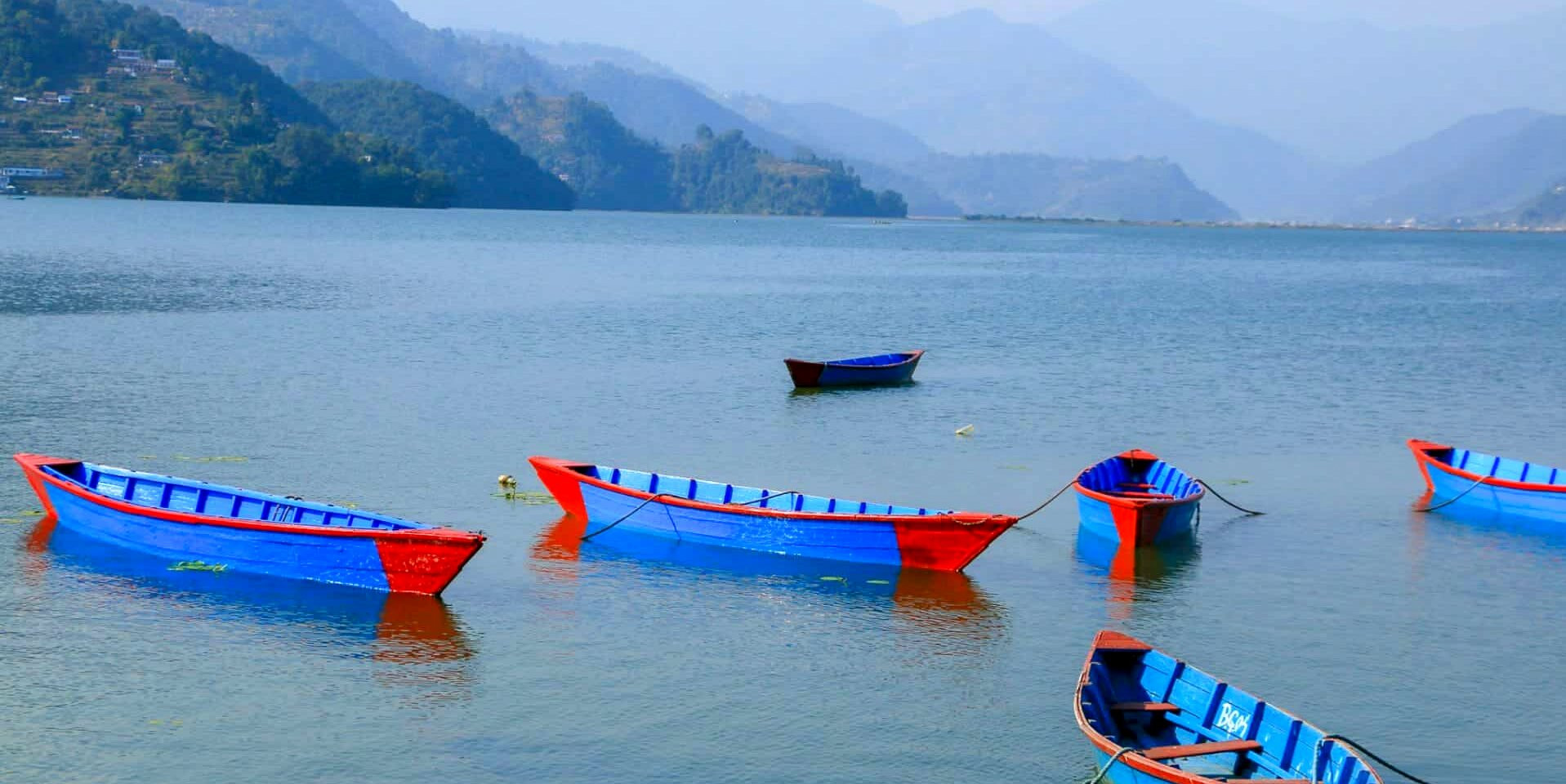
-
Natural Beauty: Pokhara is renowned for its stunning natural landscapes. The city is set alongside the beautiful Phewa Lake, where visitors can enjoy boat rides or simply relax at the lakeside cafes and restaurants. The backdrop of the majestic Annapurna range, reflected in the serene waters of the lake, creates a breathtaking scene that captivates all who visit.
-
Adventure Sports: For thrill-seekers, Pokhara is a hub of adventure sports. It is one of the world's premier destinations for paragliding, thanks to its ideal flying conditions and stunning aerial views of the Himalayas and the lakes below. Other adventure activities include zip-lining, ultra-light flights, and bungee jumping, all offering unique ways to experience the region’s natural beauty.
-
Trekking Gateways: Pokhara is the gateway to some of the best treks in the world, including the famous Annapurna Circuit and the Annapurna Base Camp trek. The city serves as a starting point where trekkers can prepare for their journey, hire guides, and gather supplies. Shorter hikes, such as the hike to the World Peace Pagoda located on a hill across Phewa Lake, offer spectacular views and are suitable for those with limited time.
-
Cultural Attractions: Pokhara also offers a rich tapestry of cultural experiences. The Bindhyabasini Temple is one of the oldest in the area, dedicated to the goddess Bhagwati, and offers a glimpse into the religious practices of the local people. The Gurkha Museum pays tribute to the Gurkha soldiers, and the Mountain Museum provides insights into the people, history, and environment of the Himalayan region.
-
Relaxation and Leisure: The laid-back atmosphere of Pokhara makes it a perfect place for relaxation and rejuvenation. The lakeside area is lined with cafes, bars, and shops offering handmade crafts and souvenirs. Visitors can enjoy a stroll, sip coffee while admiring the view, or indulge in a spa day for complete relaxation.
-
Natural Explorations: Beyond the lake and the views, Pokhara is rich in natural attractions such as the Devi’s Falls, a stunning waterfall that plunges into a seemingly bottomless tunnel, and the nearby Gupteshwor Cave, which houses a shrine dedicated to Lord Shiva.
Relax Getaways offers comprehensive tour packages to Pokhara, ensuring that visitors not only enjoy the spectacular beauty and adventure of the region but also gain a deeper understanding and appreciation of its cultural and natural significance. With something to offer every type of traveller, Pokhara remains a must-visit destination on any trip to Nepal.
Chitwan National Park Safari
Chitwan National Park stands as a prime example of Nepal's natural heritage and biodiversity, offering an unparalleled wildlife safari experience. Located in the Terai lowlands of Nepal, it is one of the country’s most popular tourist destinations, especially for those looking to encounter wildlife up close. Here’s why a Chitwan safari should be on every nature lover’s itinerary:
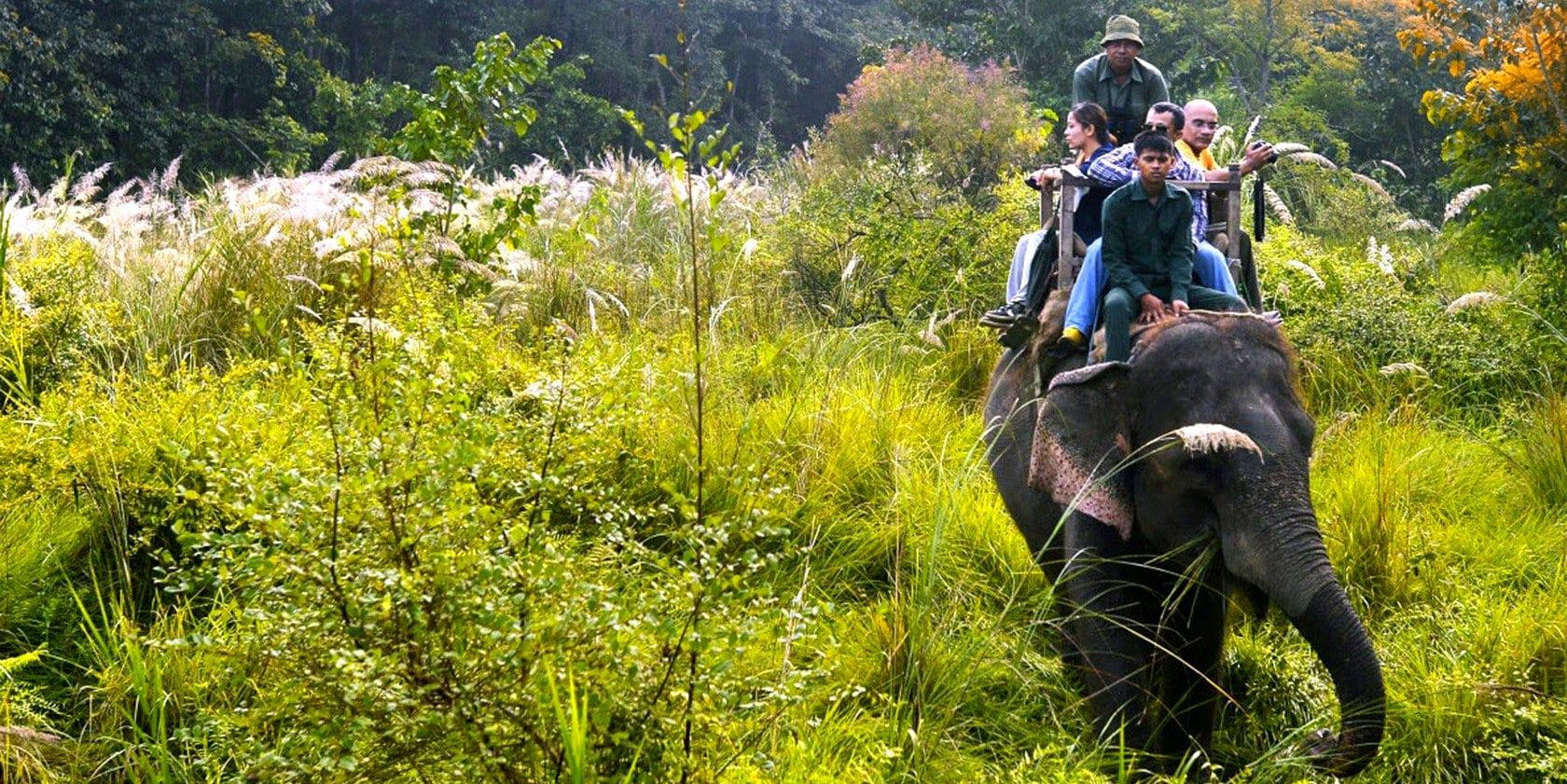
-
Diverse Wildlife: Chitwan National Park is home to an impressive array of flora and fauna, making it a haven for wildlife enthusiasts. It hosts over 500 species of birds, making it a paradise for birdwatchers. The park is also famous for its population of the endangered Royal Bengal tiger, one-horned rhinoceros, and Asian elephants. Other animals like leopards, sloth bears, gharial crocodiles, and numerous deer species are also commonly sighted during safaris.
-
Safari Adventures: Visitors to Chitwan have the unique opportunity to embark on jeep safaris, which offer a safe and comfortable way to explore the vast park. For a more traditional and adventurous experience, you can opt for elephant-back safaris, although these are becoming less common due to animal welfare concerns. Canoe trips along the Rapti River are another thrilling way to observe the park's rich wildlife, especially the aquatic species and birdlife.
-
Cultural Interaction: The area around Chitwan National Park is rich in cultural diversity, with the indigenous Tharu people being the most prominent. Many safari packages include cultural tours, where visitors can experience Tharu dance performances and learn about the community’s unique lifestyle and traditions. This cultural immersion adds depth to the wildlife experience, providing insights into the local human-wildlife coexistence.
-
Conservation Efforts: Chitwan National Park is not only a hub for tourism but also a centre for conservation in Nepal. The park’s efforts in rhino and tiger conservation have been recognised globally. By visiting Chitwan, tourists contribute to these conservation efforts, as part of the proceeds from tourism activities are directed towards preserving the park’s ecological balance.
-
Lodging and Accessibility: The area around Chitwan offers a range of accommodations, from luxury lodges to budget guesthouses, providing options for every type of traveller. The park is easily accessible from major cities like Kathmandu and Pokhara by road or air, making it a convenient addition to any Nepal itinerary.
Relax Getaways specialises in organising comprehensive tours to Chitwan National Park, ensuring that every guest has a memorable and enriching experience. From planning your safari to arranging your stay and cultural activities, Relax Getaways takes care of all the details so you can immerse yourself fully in the natural and cultural beauty of Chitwan. Whether you’re an avid wildlife photographer, a nature enthusiast, or simply looking to experience the thrill of the wild, a Chitwan safari promises an adventure that’s as educational as it is exciting.
Lumbini Pilgrimage Tours
Lumbini, the birthplace of Lord Buddha, is one of the most revered spiritual sites in the world, attracting thousands of pilgrims and tourists each year. Located in the Rupandehi District of Nepal, this UNESCO World Heritage Site is a symbol of peace and spiritual awakening. Here’s why Lumbini pilgrimage tours are a profound experience for visitors:
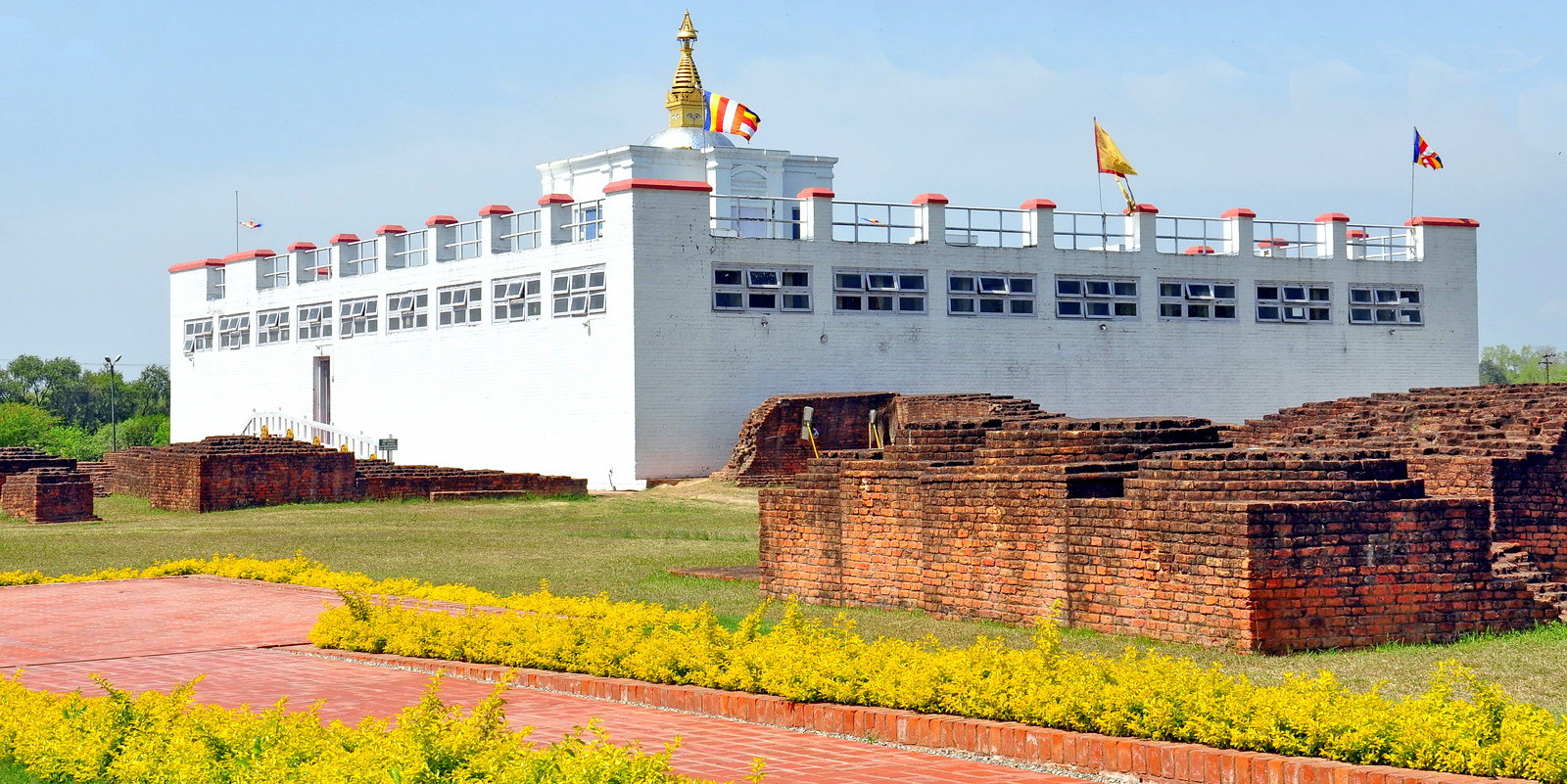
-
Birthplace of Buddha: Lumbini is celebrated as the place where Queen Mayadevi gave birth to Siddhartha Gautama, who later achieved enlightenment and became Buddha. The central attraction is the Mayadevi Temple, which marks the exact spot of Buddha’s birth. The site is sanctified by a marker stone and an ancient image depicting the birth scene of Buddha, making it a poignant place for reflection and meditation.
-
Archaeological Significance: The area around Lumbini is rich with archaeological remains that trace the historical context of Buddha's life. Excavations have uncovered ancient stupas, monasteries, and other artefacts dating back to the Buddha’s time. These finds offer insights into the early development of Buddhism and the daily lives of the ancient people who lived here.
-
Monasteries from Around the World: Reflecting the global influence of Buddhism, Lumbini houses monastic buildings donated by Buddhist communities from different countries. Each monastery reflects its country’s unique architectural style and interpretation of Buddhist philosophy. Notable examples include the Zurmang Kagyud Monastery from Tibet, the Royal Thai Buddhist Monastery, and the Myanmar Golden Temple. This international representation enriches the pilgrimage experience, offering a diverse perspective on Buddhist architectural and spiritual traditions.
-
Meditation and Retreats: Lumbini is not just a place for historical and cultural exploration but also a centre for meditation and spiritual learning. Various organisations within the park offer meditation retreats, allowing visitors to immerse themselves in Buddhist teachings and practices. These retreats are available for both beginners and advanced practitioners, providing a peaceful environment conducive to spiritual growth.
-
Peace Pagoda: Among the many structures in Lumbini, the World Peace Pagoda stands out as a symbol of peace and unity. Erected by Japanese Buddhists, it is one of many such pagodas around the world, promoting peace and harmony among all people.
-
Accessibility and Facilities: Lumbini is accessible by road from major cities like Kathmandu and Pokhara, and it’s close to the border with India, making it convenient for international visitors as well. The site offers a range of facilities, from basic guesthouses to more comfortable accommodations, along with dining options serving local and international cuisine.
Relax Getaways offers tailored Lumbini pilgrimage tours that cater to the spiritual needs of our clients. Our tours include guided visits to the Mayadevi Temple, participation in meditation sessions, and explorations of the monasteries and archaeological sites. By choosing Relax Getaways, you ensure a hassle-free and enriching pilgrimage experience in Lumbini, allowing you to connect deeply with the profound legacy of Buddha in the very place his journey began.
Nagarkot Viewpoints
Nagarkot, perched on the edge of the Kathmandu Valley, is renowned for its stunning panoramas of the Himalayan mountain range, including views of Mount Everest on clear days. Just a short drive from the bustling capital city of Kathmandu, Nagarkot is a favoured escape for both locals and tourists seeking tranquillity and natural beauty. Here’s why the Nagarkot viewpoints are a must-visit for anyone travelling to Nepal:
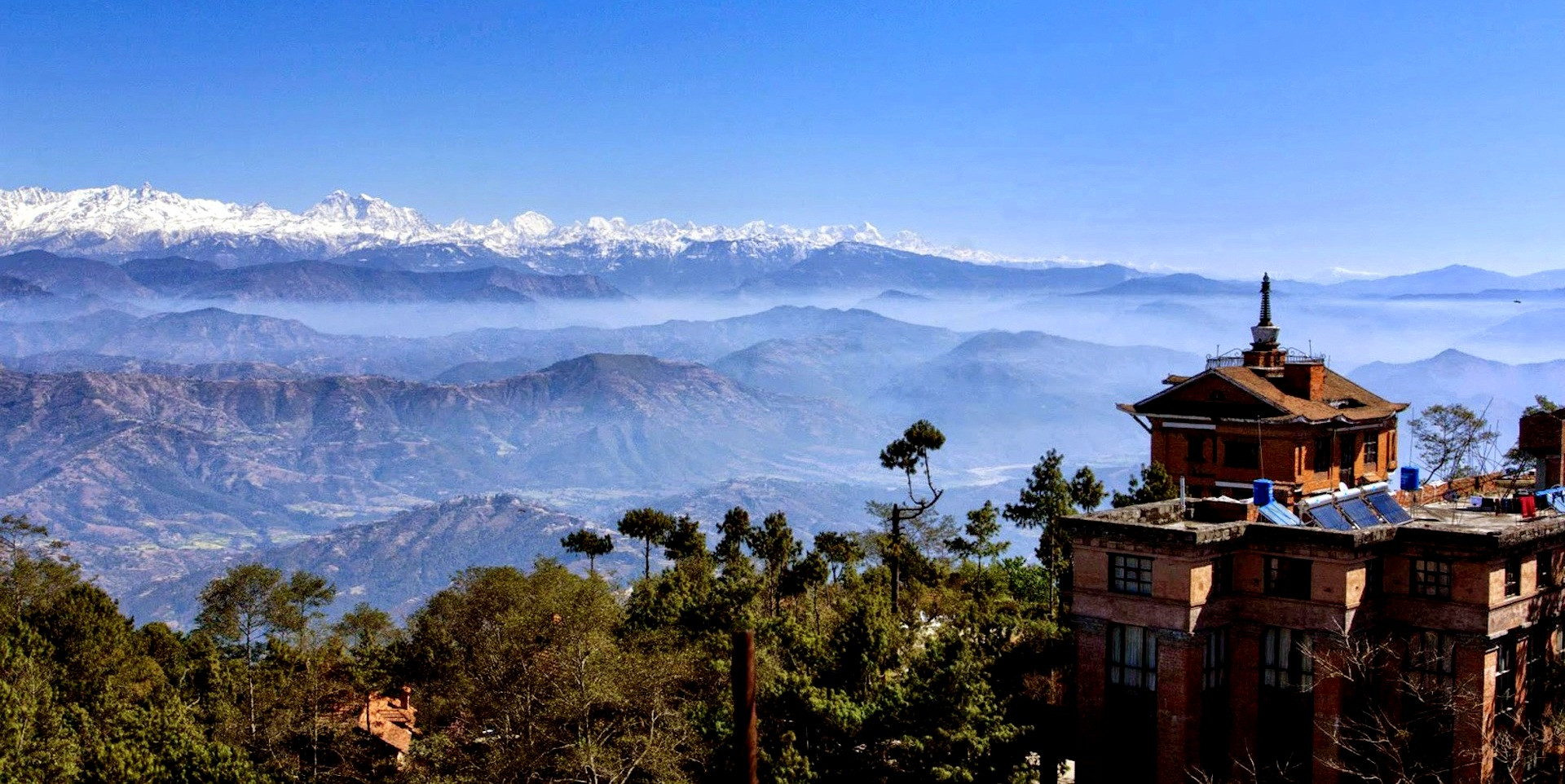
-
Unparalleled Mountain Views: Nagarkot offers some of the most spectacular mountain vistas in Nepal. The viewpoints provide a 360-degree outlook over the Himalayas, offering breathtaking views of peaks like Mt. Everest, Annapurna, and Manaslu. The best times for these panoramic views are at sunrise and sunset, when the skies light up in vibrant colours, casting golden hues over the snow-capped peaks.
-
Easy Accessibility: Located just about 32 kilometres east of Kathmandu, Nagarkot is easily accessible by road in just about an hour's drive, making it a perfect destination for a day trip or a relaxing overnight stay. Its proximity to the capital makes it an ideal spot for those who wish to experience the majesty of the Himalayas without venturing into more remote trekking routes.
-
Hiking and Trekking: For those who want to explore the area on foot, Nagarkot offers several scenic trails. These range from short walks to view towers to more strenuous hikes that lead to nearby villages or connect to other tourist destinations like Dhulikhel. The trails offer not just more intimate views of the mountains but also a chance to experience the lush landscapes and rural life of Nepal.
-
Bird Watching and Nature: The forests around Nagarkot are rich in biodiversity, including a variety of bird species, making it a delightful spot for bird watchers. The peaceful environment, coupled with the area's natural beauty, provides a serene retreat from the urban hustle and bustle.
-
Accommodations with a View: Nagarkot caters to all types of travellers, offering a range of accommodations, from luxury hotels to cosy guesthouses. Many of these places boast rooms and terraces designed to maximise the stunning views, allowing guests to wake up to the sight of the Himalayas right from their windows.
-
Cultural Interaction: Visiting Nagarkot also allows travellers to interact with local communities and experience Nepalese hospitality. Many small villages around Nagarkot are home to people from various ethnic backgrounds, providing a glimpse into the diverse cultural tapestry of Nepal.
Relax Getaways expertly incorporates visits to Nagarkot viewpoints in our tailored itineraries, ensuring that you experience the unparalleled beauty of the Himalayas in comfort and style. Whether you’re an avid photographer, a nature lover, or simply someone in search of peace, Nagarkot’s breathtaking landscapes and serene environment make it an unforgettable part of any Nepalese adventure.
Bhaktapur Cultural Tours
Bhaktapur, often referred to as the "City of Devotees," is one of the three royal cities in the Kathmandu Valley, celebrated for its preserved architecture, ancient traditions, and vibrant cultural heritage. A visit to Bhaktapur is like stepping back in time, where the richness of medieval Nepal is palpable in every alley and square. Here’s why Bhaktapur cultural tours are essential for anyone interested in experiencing the historical and artistic heart of Nepal:
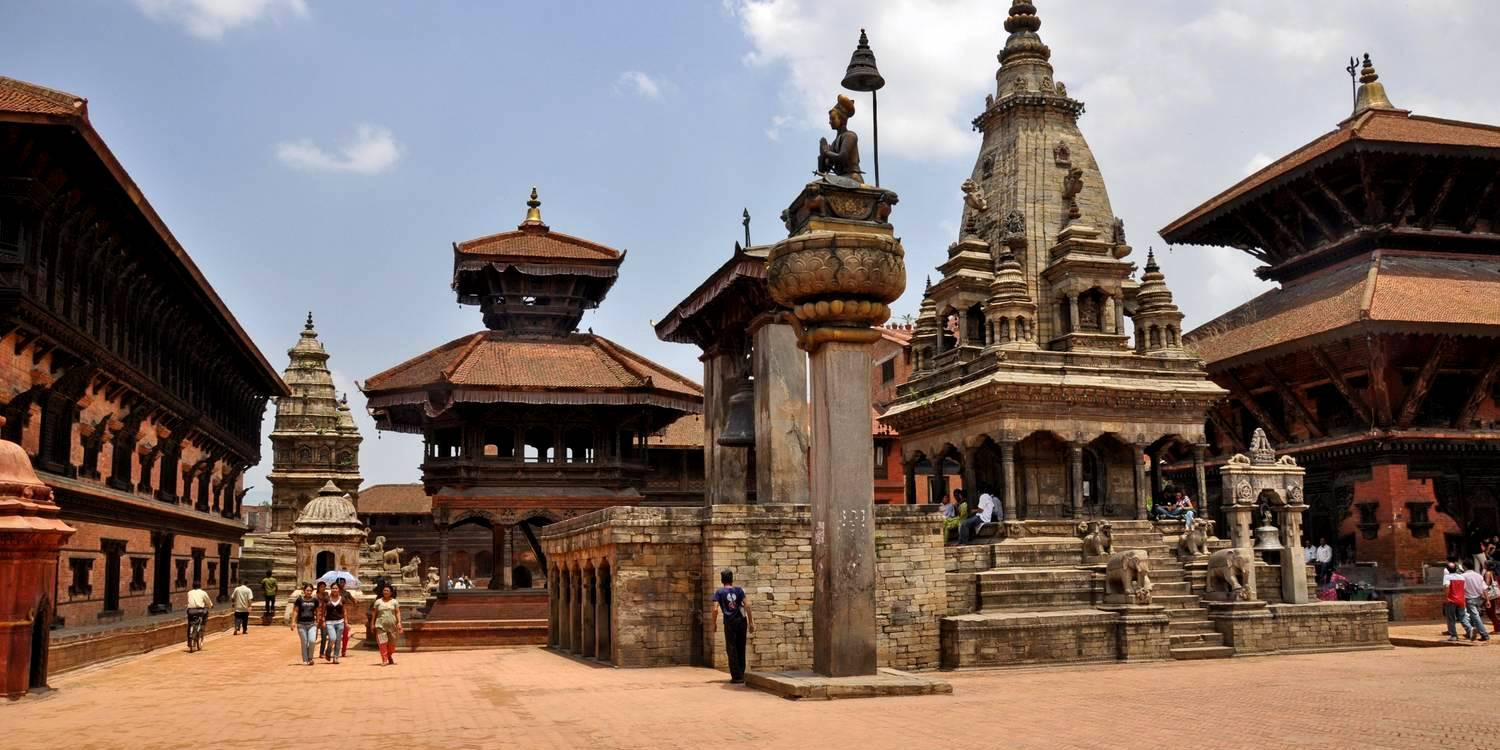
-
Architectural Marvels: Bhaktapur's Durbar Square, a UNESCO World Heritage Site, is the focal point of the city, featuring a collection of pagoda and shikhara-style temples, palaces, and courtyards that date back to the Malla Dynasty. Key attractions include the 55 Window Palace, the Golden Gate, and the breathtaking Nyatapola Temple, the tallest temple in Nepal, known for its five-tiered platform and intricate carvings.
-
Living Heritage: Unlike many historical sites that feel like museums, Bhaktapur is very much a living city. Artisans can be seen weaving cloth or throwing pots, using traditional methods passed down through generations. The city is famous for its pottery and handmade Thangka paintings, providing visitors with a genuine glimpse into the artistic traditions that have defined this region for centuries.
-
Cultural Festivals: Bhaktapur is renowned for its vibrant festivals, which are celebrated with great enthusiasm and religious fervour. The Bisket Jatra, an annual festival marking Nepali New Year, is particularly spectacular, featuring chariot processions, traditional music, and dramatic performances. These festivals offer a unique opportunity to witness the living culture of Bhaktapur and its community’s strong ties to tradition and history.
-
Culinary Delights: No visit to Bhaktapur is complete without trying the local cuisine. The city is famous for its juju dhau (king yoghurt), a creamy and sweet yoghurt that is served in traditional clay pots. Bhaktapur also offers an array of Newari dishes that reflect the indigenous people's culinary skills and tastes, providing an enriching cultural and gastronomic experience.
-
Artistic Workshops: For those interested in more hands-on experiences, many local artisans conduct workshops where visitors can learn skills like pottery making, wood carving, or Thangka painting. These workshops not only help preserve the traditional crafts but also allow visitors to engage deeply with the culture.
-
Tranquil Atmosphere: Unlike the more bustling parts of the Kathmandu Valley, Bhaktapur offers a more relaxed and contemplative atmosphere, making it a perfect place for those looking to explore at a leisurely pace. The city’s traffic restrictions contribute to a quieter, more pedestrian-friendly environment.
Relax Getaways meticulously plans Bhaktapur cultural tours to ensure that every visitor experiences the profound historical and cultural significance of this ancient city. Our knowledgeable guides provide insightful narratives that enrich the understanding of Bhaktapur’s monuments, traditions, and people, making your journey through this medieval city both educational and unforgettable. Join us to discover the art, history, and soul of Bhaktapur, a true gem in Nepal's cultural crown.
Annapurna Base Camp Trekking
The Annapurna Base Camp (ABC) trek is one of the most popular treks in Nepal, offering an extraordinary combination of natural beauty, cultural experiences, and breathtaking Himalayan panoramas. This trek leads adventurers right into the heart of the Annapurna range, providing a unique opportunity to immerse themselves in the landscapes and life of the Himalayas. Here’s why the Annapurna trek is a must-do for any trekking enthusiast:
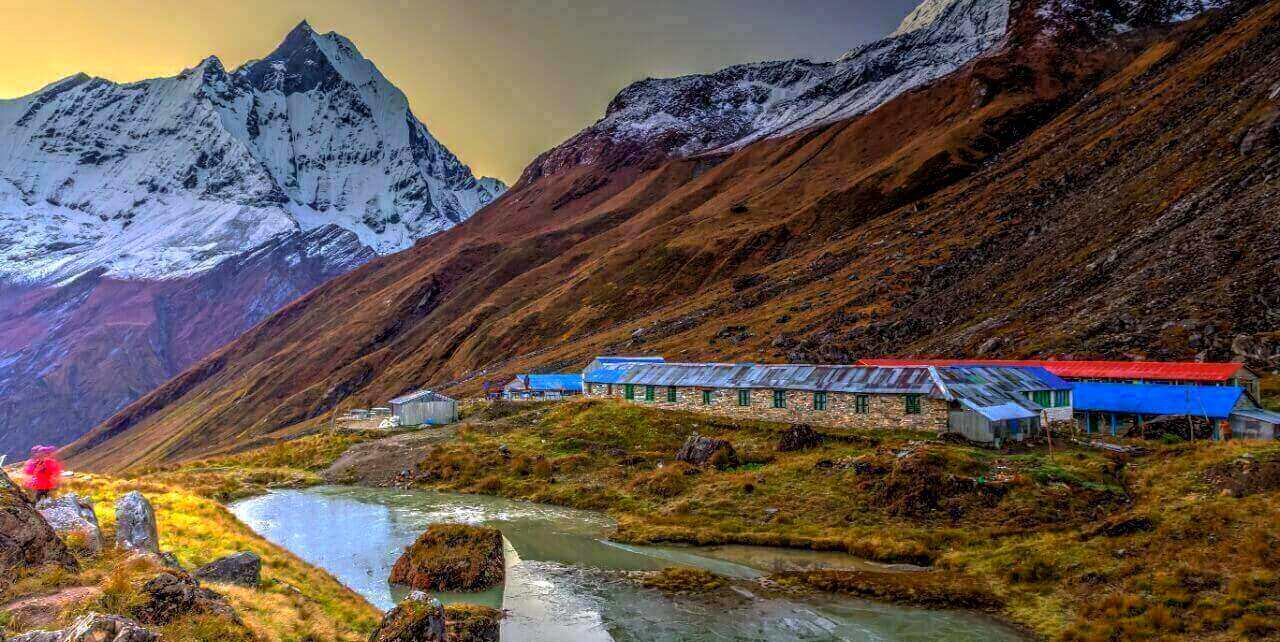
-
Stunning Scenery: The journey to Annapurna Base Camp is filled with diverse landscapes, including lush rhododendron forests, terraced rice paddies, high-altitude landscapes, and incredible mountain vistas. The trek provides close-up views of several high peaks, including Annapurna I, Annapurna South, Machapuchare (Fishtail Mountain), and Hiunchuli.
-
Manageable Difficulty: While certainly challenging, the Annapurna Base Camp trek is considered more accessible compared to other high-altitude treks such as the Everest Base Camp trek. This makes it a suitable choice for moderately experienced trekkers as well as enthusiastic beginners equipped with proper training and preparation.
-
Rich Cultural Experience: The trek routes through various Gurung and Thakali villages, offering trekkers the chance to experience the daily lives of the local ethnic communities. Villages like Ghandruk and Chhomrong are not only picturesque but also provide an opportunity to learn about the local customs, traditions, and way of life in the Nepalese highlands.
-
Diverse Flora and Fauna: The trek passes through the Annapurna Conservation Area, one of the largest protected areas in Nepal. This region is home to over 100 species of mammals, more than 60 reptiles and amphibians, and more than 450 species of birds, not to mention the diverse array of flora, including rhododendron forests, which bloom spectacularly during the spring months.
-
Therapeutic Hot Springs: The natural hot springs at Jhinu Danda, located just off the main trekking path, offer a perfect retreat to relax sore muscles in a hot bath after days of trekking. This is a unique feature of the Annapurna trek, providing a soothing experience amidst the rugged terrain.
-
Excellent Infrastructure: The trekking route is well-marked and offers good infrastructure relative to more remote paths, with a wide variety of guesthouses and lodges along the way. The availability of decent accommodations ensures that trekkers can enjoy a comfortable rest at the end of each day.
-
Flexibility in Itinerary: Various routes and entry points into the Annapurna Base Camp trek, including options from Pokhara, allow for flexibility in planning the duration and extent of the trek. This makes it possible to tailor the trek according to the time and fitness level of the trekkers.
Relax Getaways specialises in creating tailor-made treks to Annapurna Base Camp, ensuring that trekkers not only witness the awe-inspiring beauty of the Himalayas but also enjoy a safe and enriching hiking experience. Our expert guides and well-planned itineraries help you navigate the best routes, embrace local cultures, and enjoy the natural splendours of the Annapurna region. Whether you’re a seasoned trekker or a determined newcomer, the Annapurna trek offers an unforgettable adventure that combines physical challenge with cultural immersion and natural beauty.
Everest Base Camp Adventures
The trek to Everest Base Camp is arguably the most famous trekking route in the world, attracting adventurers and mountaineers who are eager to glimpse the highest peak on the planet, Mount Everest. This journey not only challenges trekkers physically but also offers unparalleled views and a deep connection with the local Sherpa culture. Here’s why the Everest trek is an adventure of a lifetime:
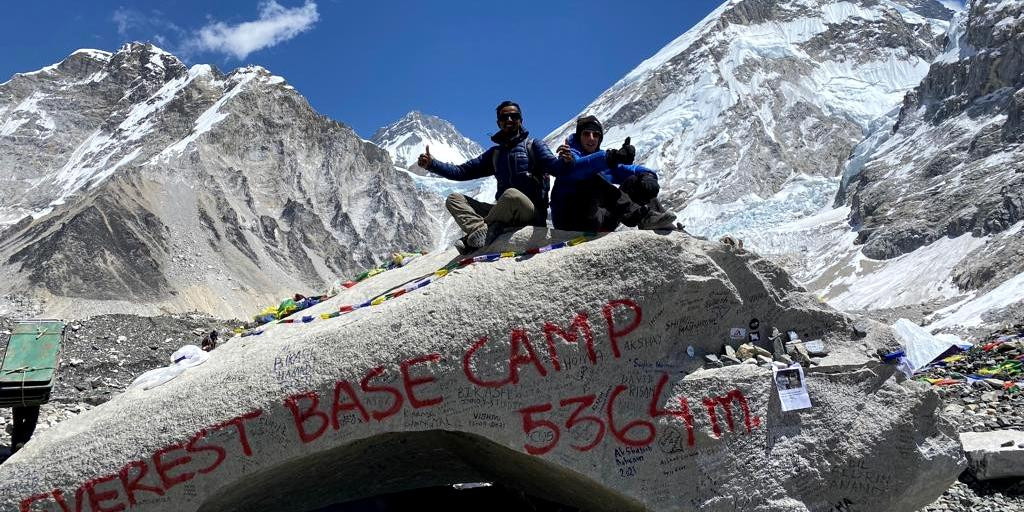
-
Iconic Mountain Views: The trek provides spectacular views of some of the world’s highest peaks, including Mount Everest, Lhotse, Nuptse, and Ama Dablam. The route is dotted with viewpoints, the most notable being Kala Patthar, which offers the best accessible view of Everest's summit.
-
Sherpa Culture and Traditions: The Everest region, or Khumbu, is the homeland of the Sherpa community, renowned for their mountaineering prowess and deep-rooted Buddhist traditions. Trekkers get to visit monasteries, museums, and Sherpa villages, gaining insights into the local way of life and their close ties with the mountains.
-
Sagarmatha National Park: The trek traverses through the Sagarmatha National Park, a UNESCO World Heritage Site known for its rugged terrain, pristine forests, and diverse wildlife, including the elusive snow leopard and the Himalayan tahr.
-
Thrilling Flight to Lukla: The adventure begins with a thrilling flight to Lukla – one of the most dangerous airports in the world due to its short runway and dramatic location. This flight provides stunning aerial views of the Himalayas and is an unforgettable experience in itself.
-
High-Altitude Trekking Experience: Trekking to Everest Base Camp is a challenging endeavour, with trails that ascend to over 5,600 meters (18,373 feet) at Kala Patthar. The journey tests one’s endurance and offers a substantial reward in the sense of accomplishment that comes from reaching the base of the world’s tallest mountain.
-
Tengboche Monastery: One of the spiritual highlights of the trek is Tengboche Monastery, the largest gompa in the Khumbu region. It is a place of great pilgrimage for Sherpas and those following Tibetan Buddhism. Visiting during a prayer ceremony is a profound and moving experience.
-
Teahouse Culture: The Everest trek is well-known for its network of teahouses run by the local Sherpa people. These teahouses offer warm hospitality and a cosy place to rest and recharge. They are social hubs where trekkers from around the world share stories and form friendships.
Relax Getaways offers expertly guided tours to Everest Base Camp, ensuring safety and comfort while providing deep cultural insights and a personal connection to the natural environment. Our experienced guides support you every step of the way, enhancing your journey with their knowledge and expertise. With Relax Getaways, the Everest trek is not just a physical journey but also a rich cultural immersion and an epic adventure that leaves lasting memories. Whether you're a seasoned alpinist or a passionate trekker, this trek is a profound testament to the wonders of the natural world.
Langtang Valley Trek
The Langtang Valley Trek is a mesmerising journey into one of Nepal's most beautiful and accessible trekking destinations, located just north of Kathmandu. This trek offers a splendid mix of natural beauty and cultural richness, making it an ideal choice for those who have limited time but still want to experience the majestic Himalayas. Here’s why the Langtang trek is a compelling adventure:
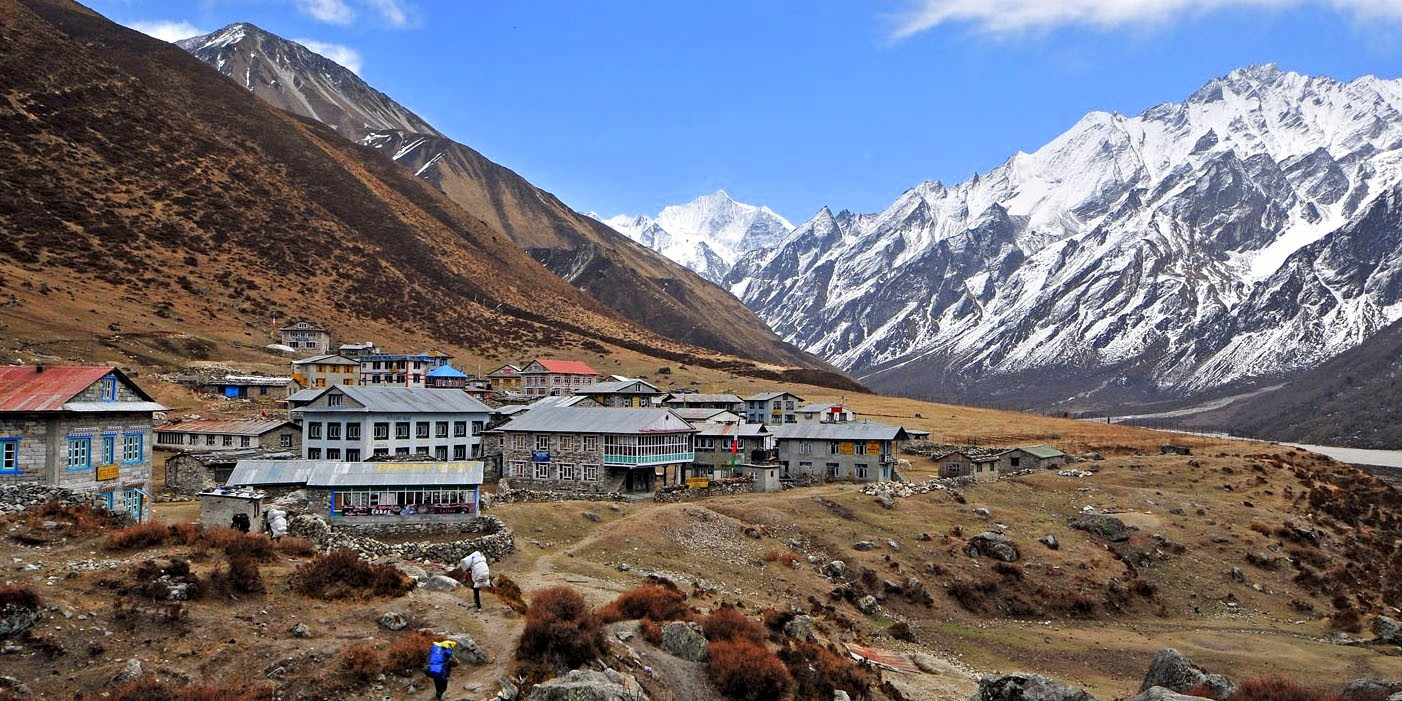
-
Scenic Beauty: The trek takes you through diverse landscapes, starting from lush subtropical forests and ascending to alpine scrub and highland meadows. The valley is surrounded by high peaks and offers dramatic views, particularly of Langtang Lirung, which dominates the skyline at over 7,200 meters (23,622 feet).
-
Cultural Richness: Langtang is home to the Tamang people, whose culture, language, and religion are similar to Tibetan traditions, providing a rich cultural experience. As you walk through quaint villages, you can see intricately carved wooden windows, colourful prayer flags, and monasteries that reflect the spiritual lifestyle of the local communities.
-
Flora and Fauna: The trek passes through Langtang National Park, which hosts a variety of wildlife. Although it's rare to see, the park is home to animals such as red pandas, Himalayan black bears, and langur monkeys. The region’s flora is equally impressive, especially during spring when the rhododendrons bloom in vibrant colours.
-
Kyanjin Gompa: A highlight of the trek is reaching Kyanjin Gompa, a small village with a famous monastery situated at 3,870 meters (12,697 feet). From here, trekkers can explore the upper valley, enjoy panoramic views, and visit the local cheese factory, which produces cheese made from yak milk.
-
Accessibility: The Langtang Valley Trek is more easily accessible than many other Himalayan treks because it starts just a few hours’ drive from Kathmandu. This makes it an excellent option for those who have a tighter schedule but still want to experience high-altitude trekking.
-
Varied Trekking Options: The trek offers flexibility in terms of duration and difficulty, with options extending from as few as seven days to over two weeks if combining routes in the Helambu region or across the Ganja La pass.
Relax Getaways offers personalised and well-organised Langtang treks that cater to a variety of interests and fitness levels. Our experienced guides ensure that trekkers not only enjoy the natural and cultural highlights of the region but also understand the ecological and social significance of the places they visit. Choosing Relax Getaways means opting for a trekking experience that is both adventurous and culturally enlightening, with a focus on responsible tourism practices that benefit local communities and preserve the natural environment. Join us to discover the hidden beauty of the Langtang Valley, a journey that promises both challenge and reward in the heart of the Himalayas.
Travel to Manang
Travelling to Manang offers an extraordinary opportunity to explore one of the most stunning and less trodden paths in the Annapurna region of Nepal. Nestled within the Himalayas, Manang is not just a typical travel destination; it's an experience rich in breathtaking landscapes and deep-rooted cultural traditions. Here’s why Manang travel should be on every adventurer's itinerary:
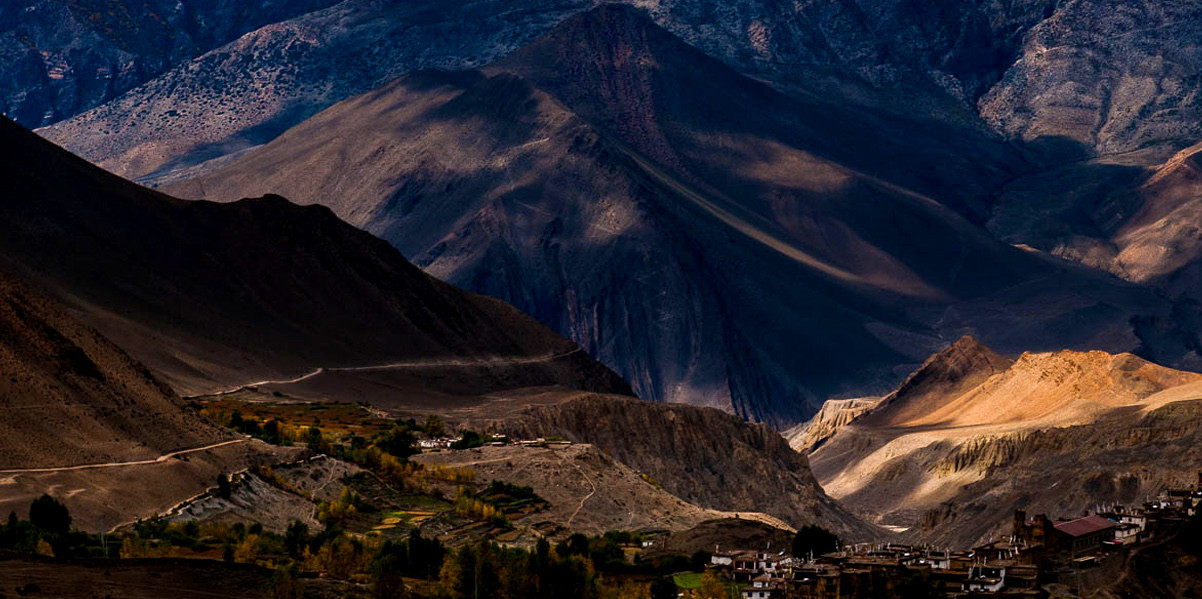
-
Unique Landscape: Manang is known for its dramatic landscapes that range from lush green forests to arid, rocky cliffs reminiscent of Tibetan plateaus. This variety provides a visual feast for trekkers and photographers alike. The region is also known for its stunning views of the Annapurna range, Gangapurna, and Tilicho Peak, which are particularly mesmerising at sunrise and sunset.
-
Gateway to Adventures: Manang serves as a crucial acclimatisation stop for trekkers on the Annapurna Circuit, one of the most famous trekking routes globally. Beyond serving as a resting point, it's the gateway to various high-altitude treks and adventures, including the challenging trek to Tilicho Lake, one of the world’shighest-altitudee lakes.
-
Rich Culture: The cultural fabric of Manang is predominantly influenced by Tibetan Buddhism, evident in the local architecture, monasteries, and prayer wheels that line the village streets. The Barge Monastery, located in Manang, is the largest in the district and contains numerous ancient relics and exquisite murals.
-
High-Altitude Lifestyle: Visiting Manang allows travellers to experience life in high altitudes, including how local communities have adapted their lifestyles in such extreme conditions. The traditional flat-roofed stone houses, agricultural practices, and local cuisine offer insights into the sustainable living practices of the Manangi people.
-
Flora and Fauna: The region around Manang is part of the Annapurna Conservation Area, which is home to a diverse range of flora and fauna. Trekkers might spot indigenous wildlife such as blue sheep, snow leopards, and various bird species. The conservation area also showcases a variety of plants that adapt to the changing altitudes along the trek.
-
Spiritual Solitude: For those seeking solitude and spiritual depth, the quieter trails and serene environment in Manang provide a perfect setting for meditation and reflection. The presence of ancient gompas and the pervasive sense of tranquillity enhance this spiritual journey.
-
Accessibility: Although remote, Manang has become more accessible thanks to improved trail conditions and local infrastructure development. The journey to Manang itself is an adventure, traversing diverse terrains and offering continually changing landscapes that captivate all who traverse them.
Relax Getaways organises comprehensive travel packages to Manang, designed to cater to both the adventurous spirit and cultural enthusiast. Our tours are carefully planned to ensure safety, comfort, and a deep engagement with the natural and cultural environment of the Himalayas. With Relax Getaways, your journey to Manang will not only be a trek but a transformative experience blending adventure, culture, and natural beauty.
Mustang Region Exploration
Exploring the Mustang Region in Nepal is an adventure that takes you to one of the most mysterious and least accessible areas of the Himalayas. Known as the former Kingdom of Lo, Mustang retains a nearly untouched Tibetan culture, dramatic landscapes, and ancient traditions. Here’s why an expedition to Mustang is a profound journey:
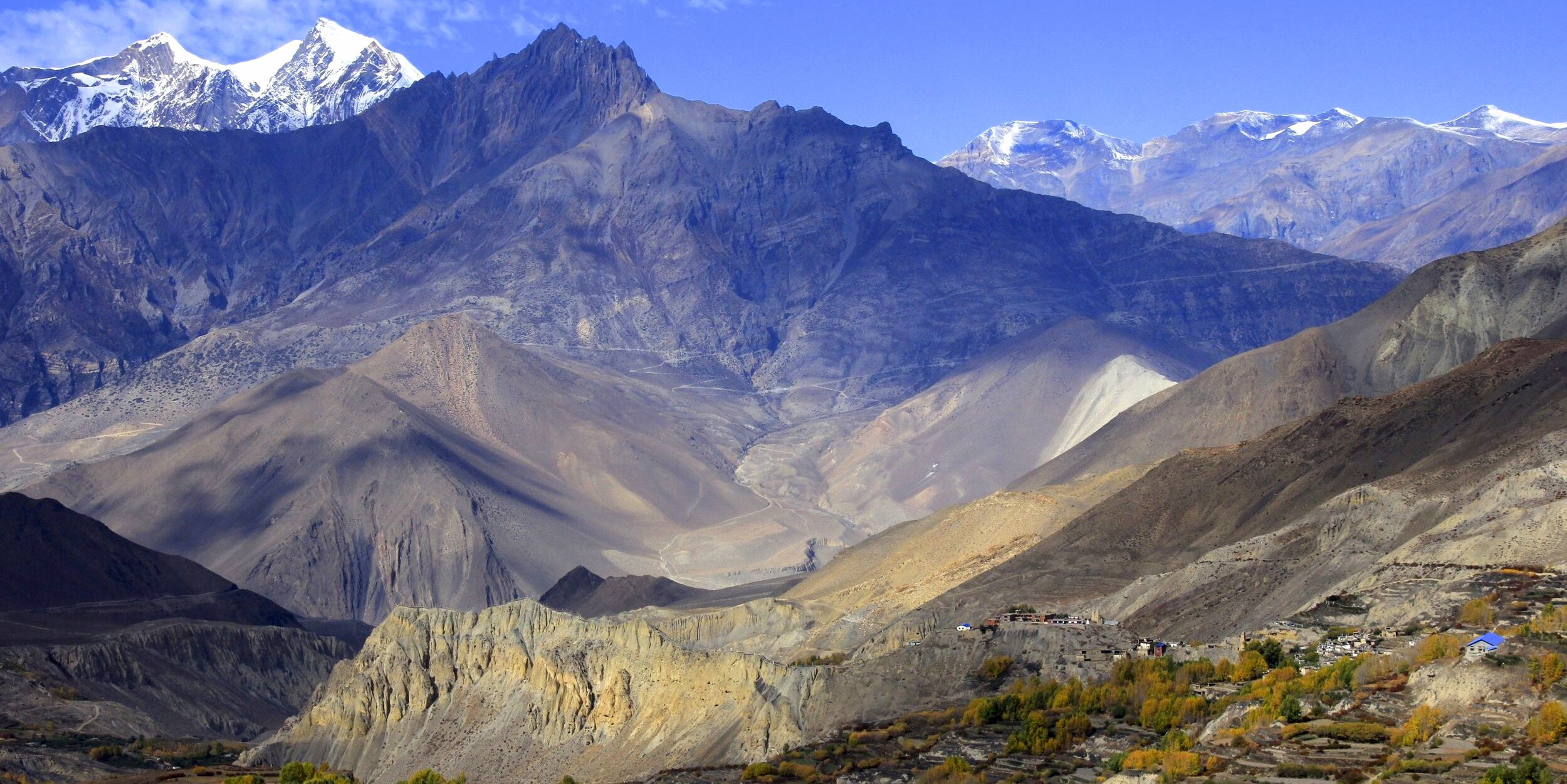
-
Ancient Tibetan Culture: Mustang is one of the few places in the world where Tibetan culture remains almost untouched by modernisation. The region was a restricted demilitarised area until 1992, preserving its legacy and isolation. Explorers can visit age-old monasteries like Lo Gekar and Thubchen, which are filled with beautiful murals and ancient Buddhist artefacts.
-
Stunning Landscapes: The landscape of Mustang is a stark contrast to the lush greenery of other parts of Nepal. It features arid and semi-arid conditions with deep canyons and rocky cliffs, creating a surreal, moon-like surface that fascinates geologists and adventurers alike. The views of Nilgiri, Annapurna, Dhaulagiri, and other Himalayan peaks add to the region's dramatic scenery.
-
Medieval Town of Lo Manthang: Lo Manthang, the walled capital of the ancient Kingdom of Mustang, is a highlight of any visit. This medieval town offers a glimpse into the past with its royal palace, traditional mud-brick houses, and narrow alleyways. The annual Tiji Festival, featuring masked dances and cultural celebrations, is a vibrant and colourful time to visit.
-
Unique Flora and Fauna: Despite its arid conditions, Mustang is home to unique flora and fauna adapted to the high desert climate. The region's biodiversity includes rare species such as the snow leopard, Himalayan blue sheep, and the Tibetan wild ass.
-
Archaeological Wonders: Mustang is known for its mysterious sky caves, some of which are thousands of years old and contain ancient human remains and artefacts. These caves, set high in the cliffs, offer intriguing insights into the early inhabitants of the region.
-
Spiritual Sites: The region is dotted with significant spiritual sites, including the sacred Muktinath Temple, a pilgrimage site revered by both Hindus and Buddhists. The journey to Muktinath is itself a spiritual experience, cherished by many pilgrims.
-
Adventure Opportunities: Mustang offers endless opportunities for adventure, from trekking and horseback riding to mountain biking. The challenging terrains and the high passes are perfect for those looking for a thrilling experience.
Relax Getaways offers expertly crafted tours to the Mustang Region, designed to provide an immersive experience of this remote and spectacular part of the Himalayas. Our guided tours ensure that travellers not only witness the breathtaking beauty of Mustang but also engage deeply with its culture, history, and spirituality. With Relax Getaways, your exploration of Mustang will be a journey that's as enlightening as it is adventurous, providing lasting memories of one of the most preserved regions of the Himalayas.
Ghorepani Poon Hill Trek
The Ghorepani Poon Hill Trek is one of the most popular and relatively easy treks in the Annapurna region of Nepal. Known for its stunning panoramic views of the Himalayan range and its accessibility, this trek is ideal for those who want to experience the beauty of the Nepalese mountains without the physical demands of a high-altitude trek. Here's why the Poon Hill trek is a must-do:
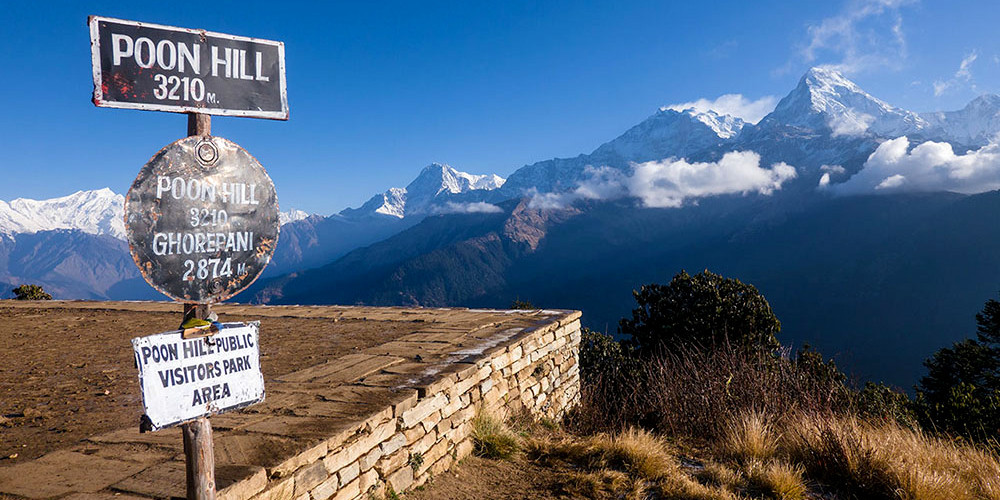
-
Spectacular Mountain Views: The highlight of the trek is the early morning ascent to Poon Hill (3,210 meters), which offers one of the best vantage points to witness the sunrise over the Himalayas. From here, trekkers can see a breathtaking panorama that includes several peaks over 8,000 meters, such as Dhaulagiri, Annapurna I, and Manaslu.
-
Accessible Trekking: The Ghorepani Poon Hill trek is known for its moderate difficulty level, making it suitable for families with children and less experienced trekkers. The paths are well-maintained, and the ascent is gradual, offering a pleasant trekking experience without the risks associated with higher altitudes.
-
Rich Cultural Experience: The trek passes through various Gurung and Magar villages, providing trekkers with an opportunity to experience the warm hospitality and rich culture of these ethnic groups. Villages like Ulleri and Ghorepani are known for their picturesque settings and traditional teahouses, where trekkers can mingle with locals and other travellers.
-
Beautiful Flora and Fauna: The trail winds through rhododendron forests, which are spectacular in the spring when they bloom in vibrant colours. The region is also part of the Annapurna Conservation Area, home to a diverse range of birds and wildlife, enhancing the trek's appeal to nature lovers.
-
Short Itinerary: One of the appealing aspects of the Ghorepani Poon Hill trek is its duration. The trek can be completed in as few as 4-5 days, making it an excellent choice for those with limited time who still want to experience the majesty of the Himalayas.
-
Year-Round Trekking: While the best times to trek are during the spring (March to May) and autumn (September to November) seasons, the Ghorepani Poon Hill trek is accessible year-round, including during the monsoon and winter months, albeit with different challenges and beauties.
Relax Getaways specializes in the Ghorepani Poon Hill trek, offering well-organized itineraries that cater to the needs and preferences of all trekkers. Our expert guides ensure a safe and enjoyable journey, enriching the trek with insights into the local culture and natural environment. With Relax Getaways, trekkers can look forward to a memorable adventure in the Annapurna region that combines natural beauty, cultural immersion, and physical activity in one of the most beautiful settings in the world.
Ilam Tea Gardens
The Ilam Tea Gardens in eastern Nepal represent one of the country's hidden gems, renowned for their lush greenery and the soothing, scenic landscapes that define the region. Often compared to the famous tea gardens of Darjeeling, Ilam's sprawling estates offer a serene and picturesque retreat from the bustling city life. Here’s why a visit to the Ilam tea gardens is a must for any traveller to Nepal:
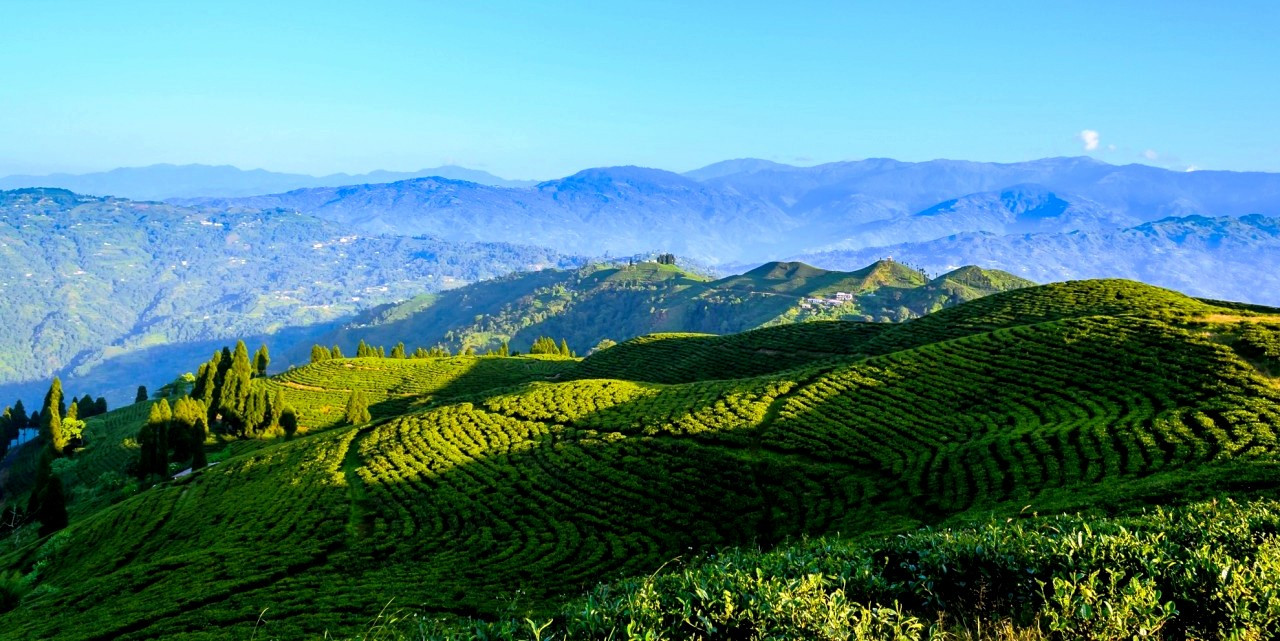
-
Scenic Beauty: Ilam is celebrated for its beautiful rolling hills covered with tea leaves that stretch as far as the eye can see. The neat rows of tea plants create a vivid green landscape that is both calming and visually stunning. The natural beauty of the area is complemented by the backdrop of the Himalayas to the north, making Ilam a photographer’s paradise.
-
Rich Tea Culture: Visiting the tea gardens provides an insightful look into the tea-growing process, from planting to harvesting to processing. Travellers can tour the facilities to see how tea is made and even participate in tea picking themselves. Tasting sessions allow visitors to savour different varieties of Ilam tea, which is known for its rich aroma and flavour.
-
Local Hospitality: The people of Ilam are known for their warmth and hospitality. Many tea estates offer homestay options, where visitors can stay with local families, enjoying traditional Nepalese cuisine and learning about the daily lives of the tea growers. This cultural exchange adds a meaningful dimension to the visit.
-
Biodiversity: Ilam is not just about tea; it’s also rich in biodiversity. The area is home to several species of birds, butterflies, and orchids. For nature lovers, the nearby forests and the Mai Pokhari, a sacred pond surrounded by dense forests, are ideal for bird watching and hiking.
-
Climate: Ilam enjoys a pleasant climate year-round, which makes it an excellent destination for those looking to escape the heat of the plains or the harsh winter of higher altitudes. The weather is particularly delightful from October to December and from February to April, when the skies are clear, and the views are unobstructed.
-
Accessibility: Ilam is accessible via road from major cities like Kathmandu and Siliguri in West Bengal, India. The journey itself, through the hills of eastern Nepal, is incredibly scenic and adds to the overall experience of visiting Ilam.
Relax Getaways offers tailored trips to the Ilam Tea Gardens, ensuring that travellers not only enjoy the stunning landscapes and tea culture but also gain an authentic insight into the local way of life. Our tours are designed to provide a relaxing and educational experience, highlighting the best that Ilam has to offer. Whether you are a tea enthusiast, a nature lover, or simply looking for a peaceful retreat, the Ilam Tea Gardens promise a delightful and enriching travel experience.
Janakpur Historical Sites
Janakpur, also known as Janakpurdham, is a city of immense historical and religious significance in Nepal, primarily known as the mythical birthplace of Goddess Sita and the setting for much of the Hindu epic, the Ramayana. The city is a major pilgrimage destination for Hindus from Nepal and India alike. Here’s why a visit to Janakpur's historical sites is a deeply enriching experience:
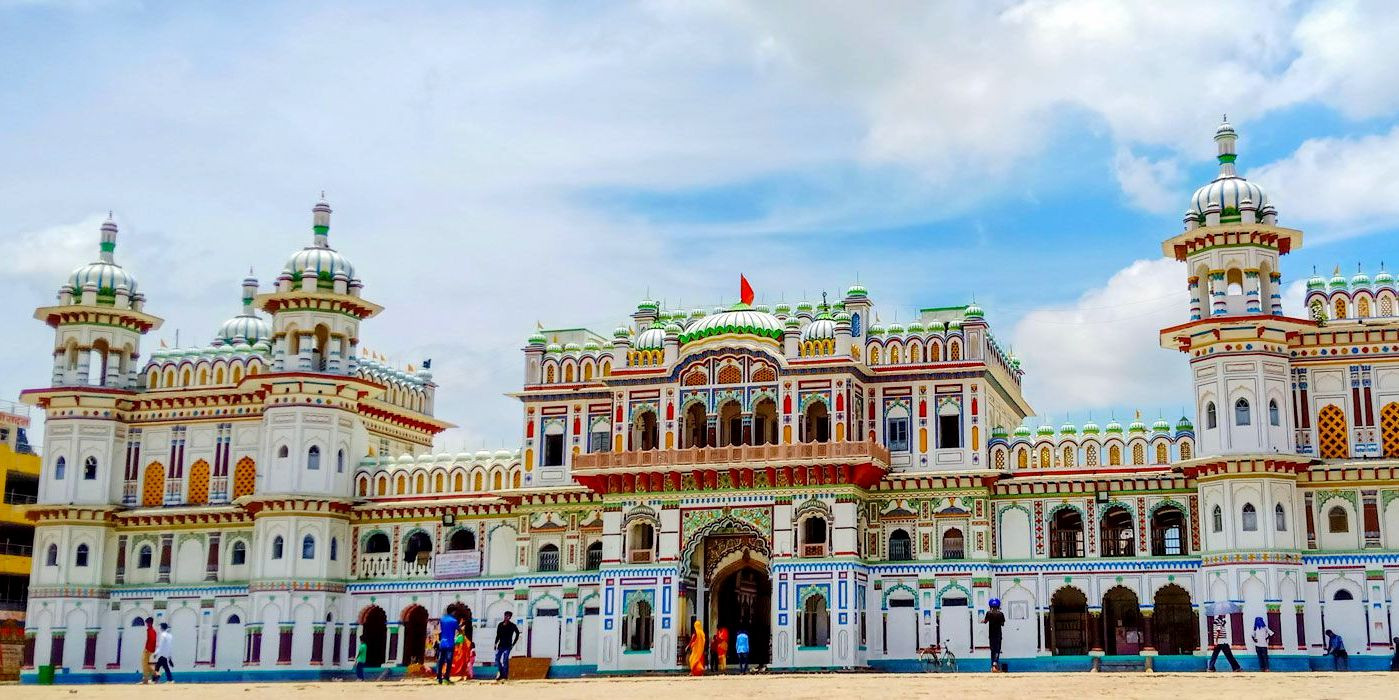
-
Janaki Mandir: The centrepiece of Janakpur's religious landscape is the Janaki Mandir, one of the most important examples of neo-classical architecture in Nepal. This temple, dedicated to Goddess Sita, is often referred to as the "Nau Lakha Mandir" (meaning 'nine lakh') because it reportedly cost nine lakh rupees to build in the early 20th century. The temple's striking appearance, with its bright white walls and intricate carvings, makes it a must-visit landmark.
-
Ram Janaki Vivah Panchami: Every year, Janakpur hosts the Vivah Panchami festival, which commemorates the marriage of Sita and Lord Ram. This event attracts thousands of pilgrims who participate in the vivid reenactments of the wedding, processions, and various rituals. It is a vibrant, colourful festival that offers deep insight into the local culture and religious traditions.
-
Ram Sita Bibaha Mandap: This historical site is believed to be the actual location where the marriage of Sita and Ram took place. Pilgrims and tourists visit this spot to pay homage and view the stone marked with footprints said to belong to Sita and Ram, adding a tangible sense of history and myth to their visit.
-
Mithila Art and Culture: Janakpur is also the centre of Mithila culture, which is renowned for its Mithila paintings, a traditional form of art made by women of the region. These paintings, characterised by intricate geometric and symbolic designs, usually depict scenes from Hindu mythology, including the Ramayana, and are a key cultural highlight for visitors.
-
Dhanush Sagar and Ganga Sagar: These twin sacred ponds are located near the Janaki Mandir and are frequent spots for pilgrims to take ritual baths. The tranquillity and spiritual atmosphere of these ponds offer a reflective space for visitors amidst the bustling temple activities.
-
Historical Museums: Janakpur houses several museums that showcase artefacts, manuscripts, and paintings that tell the story of the city's rich cultural and religious history. These museums provide context and background for the significance of Janakpur in the Hindu religion and Nepalese culture.
-
Pilgrimage Tourism: Janakpur serves as a spiritual hub for many visitors looking to deepen their religious beliefs or simply to experience the ongoing living traditions of a sacred city. The daily rituals, chants, and spiritual ceremonies in Janakpur offer a profound sense of connection to the divine.
Relax Getaways offers thoughtfully designed tours to Janakpur, allowing visitors to immerse themselves in the city’s historical and religious significance. Our knowledgeable guides enhance the experience by providing insights into the spiritual, cultural, and historical aspects of Janakpur, making each visit both educational and awe-inspiring. Whether you are on a pilgrimage or a cultural exploration, Janakpur promises a rich tapestry of spiritual and cultural experiences that resonate long after you leave.
Rara Lake Trip
A trip to Rara Lake, Nepal's largest lake, offers an exquisite experience for nature lovers and adventurers alike. Located in the remote Mugu District of northwestern Nepal, within the Rara National Park, this high-altitude lake is renowned for its stunning natural beauty and serene, pristine environment. Here’s why a Rara Lake trip is a captivating adventure:
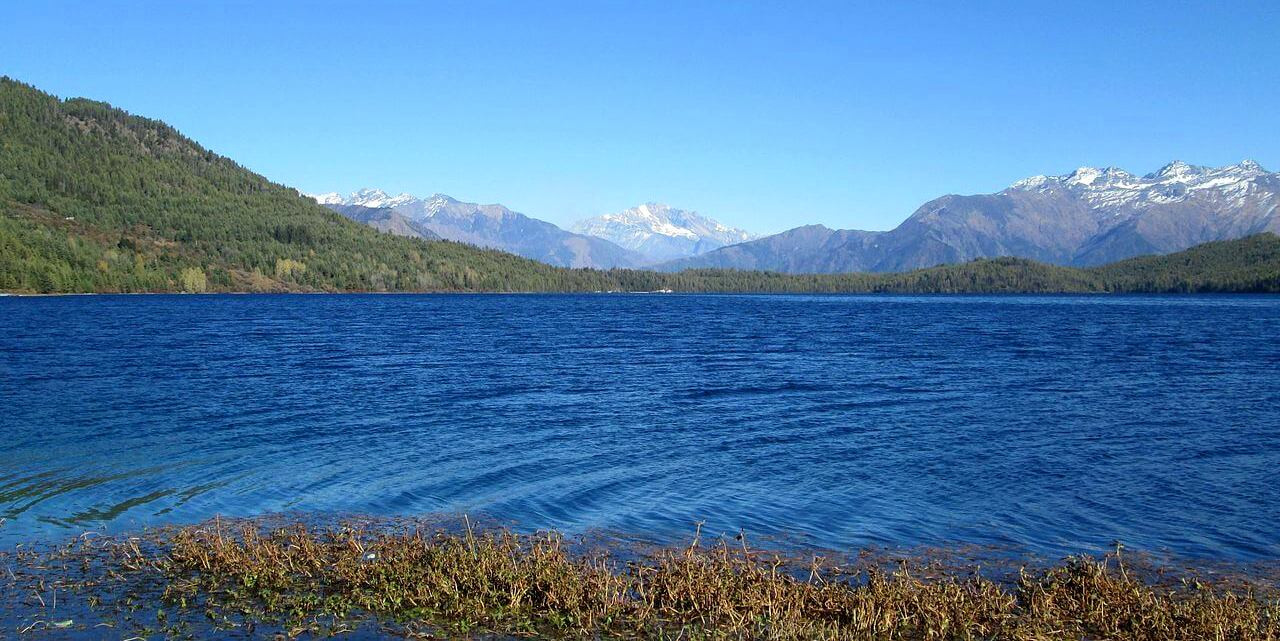
-
Spectacular Natural Beauty: Rara Lake, at an elevation of 2,990 meters, is famed for its crystal-clear azure waters that reflect the surrounding snow-capped Himalayan peaks. The lake spans an area of about 10.8 square kilometres, with wooded shores and a backdrop of magnificent conifer forests, making it a picturesque destination.
-
Tranquil Environment: Unlike more commercialised tourist destinations in Nepal, Rara Lake offers a tranquil retreat in a relatively untouched and pristine natural setting. The peace around the lake provides a perfect environment for reflection and relaxation, away from the hustle and bustle of city life.
-
Biodiversity: Rara National Park, the smallest national park in Nepal, surrounds the lake, is rich in biodiversity. It is home to numerous species of flora and fauna, some of which are endemic to the park. Visitors might spot the Himalayan black bear, musk deer, red panda, and a variety of birds, including the Himalayan monal (Nepal’s national bird).
-
Hiking and Trekking: The area around Rara Lake offers excellent hiking and trekking opportunities. Trails around the lake provide stunning views and connect with various cultural sites and villages within the park. These treks are less crowded than those in the Annapurna and Everest regions, offering a more solitary and intimate experience with nature.
-
Cultural Experience: The region around Rara Lake is inhabited by various ethnic groups, including the Malla Thakuri and Tibetan communities. Visitors have the opportunity to learn about their unique cultures, traditions, and lifestyles, which adds a rich cultural layer to the natural exploration.
-
Accessibility: Reaching Rara Lake involves a flight from Kathmandu to Nepalgunj, followed by another flight to Talcha Airport, then a few hours of trekking. Although the journey might seem daunting, the remoteness is what keeps Rara so pristine and beautiful. For those who wish to trek, there are routes from Jumla and other nearby areas that offer a more adventurous approach to the lake.
-
Perfect for Photography: The scenic landscapes, the vibrant cultural attire of the local people, and the wildlife make Rara Lake a photographer’s paradise. Every moment offers a new opportunity to capture stunning photographs that encapsulate the essence of this remote region.
Relax Getaways meticulously organises trips to Rara Lake, ensuring that travelers not only witness the breathtaking beauty of the lake but also enjoy comfortable accommodations and a deep connection with the natural and cultural environment. Our trips are designed for those who appreciate off-the-beaten-path destinations and seek a tranquil experience in one of Nepal’s most beautiful settings. A journey to Rara Lake with Relax Getaways is more than just a visit; it’s an immersion into an enchanting world where nature’s beauty remains undisturbed and awe-inspiring.
Bandipur Town Visit
A visit to Bandipur Town in Nepal is like stepping back in time to a place where history and culture have been preserved with reverence and pride. Nestled in the hills between Kathmandu and Pokhara, Bandipur captivates visitors with its beautifully maintained Newari architecture, cobblestone streets, and panoramic mountain views. Here’s why a trip to Bandipu, Nepal, is a must for any cultural enthusiast or history buff:
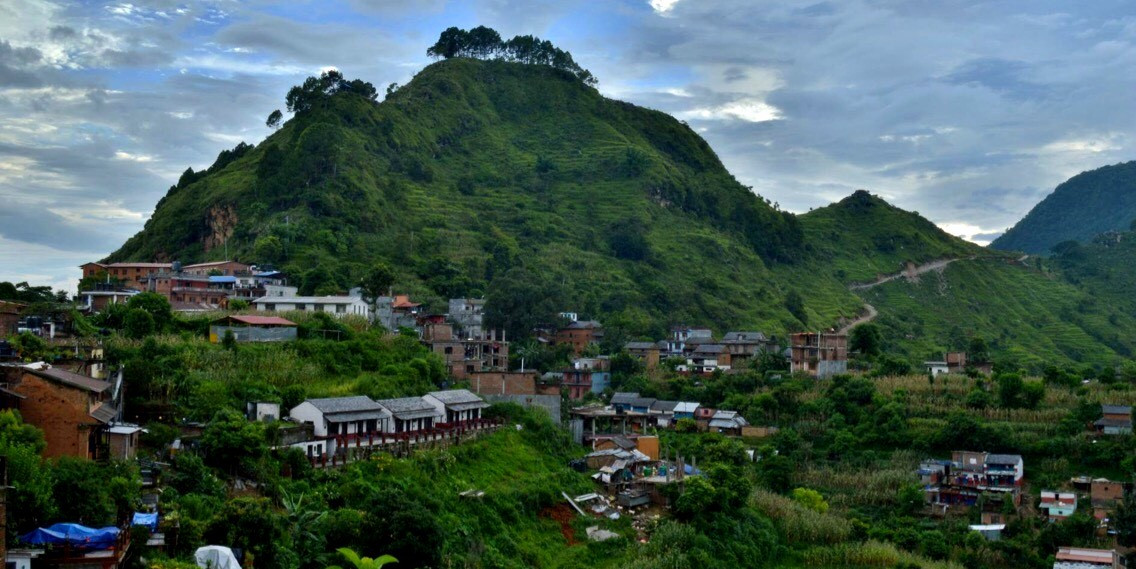
-
Preserved Newari Culture: Bandipur is a living showcase of the Newari culture that flourished during Nepal’s medieval period. The town’s architecture is a blend of traditional Newari and colonial styles, with many well-preserved buildings that have been converted into cafes, guesthouses, and shops. Walking through Bandipur is like walking through a living museum, offering a glimpse into Nepal’s rich architectural heritage.
-
Stunning Views: Perched high on a ridge, Bandipur offers unrivalled views of the Himalayan range, including the Annapurna, Dhaulagiri, Manaslu, and Langtang ranges. The town’s elevated position makes it a perfect spot for sunrise and sunset viewings, with the mountains turning golden in the early and late hours of the day.
-
Vehicle-Free Zone: The main bazaar area of Bandipur is closed to vehicle traffic, which preserves the tranquillity of the town and makes it a pleasant place for walking and soaking in the atmosphere. This pedestrian-friendly setup encourages strolls through the town, enhancing the experience of its cultural and historical offerings.
-
Rich History: Originally established as a trading post along the India-Tibet trade route, Bandipur still retains the charm and character of a bygone era. Its history is visible in the traditional artisanship, cultural festivals, and everyday practices of its residents, who are proud to share their heritage with visitors.
-
Adventure Activities: For those looking for a bit more excitement, Bandipur offers several trekking trails that lead to nearby hills and villages. Paragliding is also available for adventure seekers who wish to experience the breathtaking landscape from above.
-
Cultural Festivals: Bandipur hosts several festivals throughout the year, which are great opportunities to experience local traditions, dances, and music. The town comes alive with colour and energy during these celebrations, providing visitors with a deeper understanding of the community's cultural dynamics.
-
Community-Based Tourism: The residents of Bandipur are actively involved in tourism, which has helped to keep their cultural practices alive and vibrant. By visiting Bandipur, travellers support these community efforts and contribute to the sustainable development of the area.
Relax Getaways offers carefully crafted tours to Bandipur, ensuring that visitors can fully appreciate the town's historical significance, architectural beauty, and cultural richness. Our expert guides are locals with deep knowledge of Bandipur’s history and traditions, ready to provide you with an insightful and engaging tour. Whether you’re looking to relax, explore, or immerse yourself in Nepali culture, Bandipur provides a serene and enriching getaway.
Kanchenjunga Base Camp Trek
The Kanchenjunga Base Camp Trek is one of the most thrilling and secluded high-altitude treks in Nepal, taking adventurers to the base of the world’s third-highest peak, Mount Kanchenjunga. This trek offers not only spectacular natural beauty but also a unique cultural experience away from the more trodden paths of the Everest and Annapurna regions. Here’s why the Kanchenjunga trek stands out as a remarkable adventure:
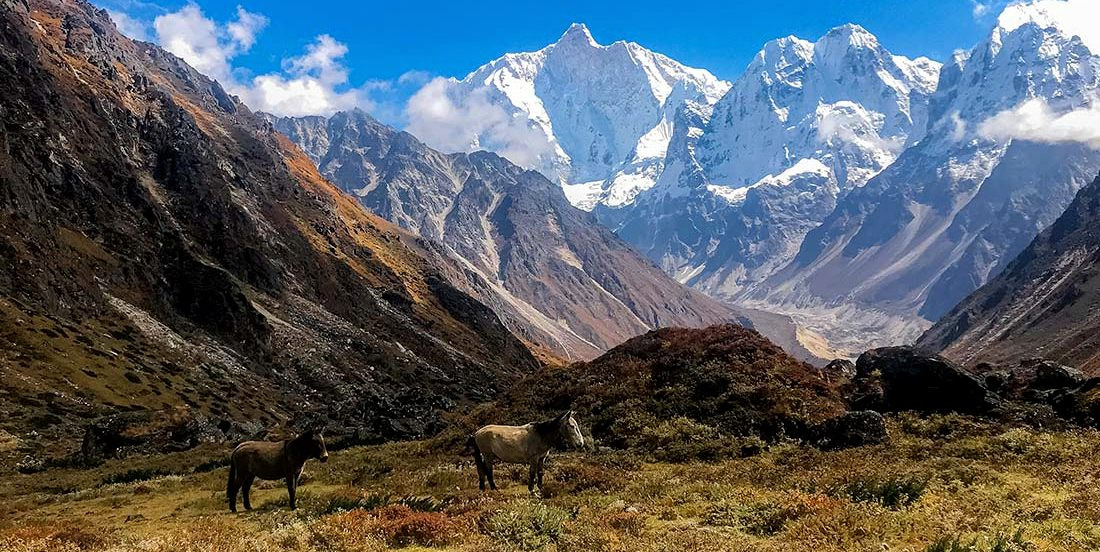
-
Stunning Mountain Scenery: The trek provides awe-inspiring views of Mount Kanchenjunga, which rises to 8,586 meters. Along the route, trekkers are treated to dramatic vistas of towering peaks, including Kanchenjunga South, Kanchenjunga Central, and Kanchenjunga North. The panoramic views also encompass a range of other Himalayan mountains, adding to the trek’s visual splendour.
-
Remote and Pristine Trails: The Kanchenjunga region is less visited compared to other trekking destinations in Nepal, offering a pristine environment that is both peaceful and untouched. This isolation allows for a more intimate experience with nature and an opportunity to trek in relative solitude.
-
Diverse Ecosystems: The trek passes through the Kanchenjunga Conservation Area, which spans tropical lowlands, temperate forests, and alpine grasslands. This variety in ecosystems supports an incredible diversity of flora and fauna, including the elusive snow leopard, red panda, and Himalayan black bear. The area is also known for its impressive array of bird species.
-
Cultural Richness: The trail ventures through diverse ethnic villages, including communities of the Limbu, Rai, Sherpa, and Tibetan people. This cultural mosaic offers trekkers a chance to learn about different traditions, languages, and lifestyles, which are markedly distinct from those in other parts of Nepal.
-
Challenging Trekking Experience: The Kanchenjunga Base Camp Trek is considered one of the more challenging treks in Nepal due to its remote location, high altitudes, and less developed trails. This makes it ideal for experienced trekkers looking for an adventure that tests their limits and rewards them with unparalleled natural beauty.
-
Spectacular High Passes: The trek includes crossing some spectacular high passes, including Sele La, Sinion La, and Mirgin La, providing challenging hikes and stunning views across the Himalayas. These passes are memorable highlights for any trekker.
-
Conservation and Sustainability: Trekking in the Kanchenjunga area supports local conservation efforts to preserve the natural environment and promote sustainable tourism practices. By visiting this region, trekkers contribute to the local economy and the protection of its unique biodiversity.
Relax Getaways specialises in organising treks to Kanchenjunga Base Camp, ensuring that adventurers not only witness the majestic beauty of the Himalayas but also engage responsibly with the environment and local cultures. Our expert guides are knowledgeable about the terrain, culture, and history of the area, enhancing your trekking experience with enriching insights and competent support. With Relax Getaways, the Kanchenjunga Base Camp Trek is not just a physical journey but a profound exploration of one of the most spectacular and sacred landscapes on earth.
Muktinath Temple Pilgrilege
The Muktinath Temple pilgrimage is one of the most sacred journeys in Nepal, revered by both Hindus and Buddhists. Located at an altitude of 3,710 meters in the Mustang region, Muktinath is a symbol of religious syncretism and a place where elements of nature are worshipped in harmony. Here's why a pilgrimage to Muktinath Temple is a profound spiritual experience:

-
Spiritual Significance: Muktinath is known as a place of salvation (Mukti) and holds great significance in both Hinduism and Buddhism. For Hindus, it is one of the eight most sacred shrines, and for Buddhists, it is a place where Guru Rinpoche, the founder of Tibetan Buddhism, meditated. The temple is dedicated to Lord Vishnu, and it is believed that all miseries/sorrows are relieved once you visit this temple.
-
Sacred Elements: The site is renowned for its 108 water spouts, where pilgrims perform ritual ablutions. These waters are considered holy and are believed to cleanse the sins of individuals. The temple also houses a natural eternal flame, the Jwala Mai temple, which is fueled by natural gas underground and has been burning for centuries, symbolising the divine light.
-
Stunning Location: Set against a backdrop of incredible mountain landscapes in the Annapurna region, the journey to Muktinath is as breathtaking as the destination itself. The route offers spectacular views of the Himalayas, including Dhaulagiri and Nilgiri.
-
Cultural Diversity: The Muktinath region is a melting pot of ethnic diversity, with Tibetan-influenced cultures primarily represented by the Bhotias and the Thakalis, and the Hindu pilgrims from different parts of Nepal and India. This cultural blend offers a unique experience where traditional Tibetan and Hindu practices coexist seamlessly.
-
Trekking Adventure: Reaching Muktinath can be an adventure, with routes that are part of the famous Annapurna Circuit. Trekkers can enjoy the dual experience of a challenging trek combined with a spiritual pilgrimage, enriching both body and soul.
-
Accessibility: Muktinath is accessible by various means. While trekkers might approach it as part of the Annapurna Circuit, others might choose to travel by jeep or bus from Pokhara to Jomsom and then on to Muktinath. There are also flights available from Pokhara to Jomsom, followed by a short trek or jeep ride.
-
Festival Celebrations: Visiting during festival times, such as during the Janai Purnima or Dashain festivals, can be particularly rewarding. These festivals see an influx of pilgrims and a series of special rituals and celebrations, providing a deeper insight into the spiritual and cultural practices surrounding Muktinath.
Relax Getaways specialises in arranging pilgrimages to Muktinath Temple, ensuring that every aspect of the journey is managed with respect for cultural traditions and individual spiritual needs. Our expert guides are knowledgeable about the religious significance and historical context of Muktinath, making your pilgrimage a meaningful and unforgettable experience. Whether you are seeking spiritual solace, adventure, or cultural immersion, the Muktinath Temple pilgrimage offers a profound journey into the heart of Nepal’s religious heritage.
Dolpa Region Discover
Exploring the Dolpa Region in Nepal offers an experience like no other, transporting travellers into one of the most remote and pristine environments on Earth. Tucked away in the northwestern part of Nepal, Dolpa remains a bastion of traditional Tibetan culture, unspoiled landscapes, and spiritual tranquillity. Here's why discovering the Dolpa region is a must for adventurers and culture enthusiasts:
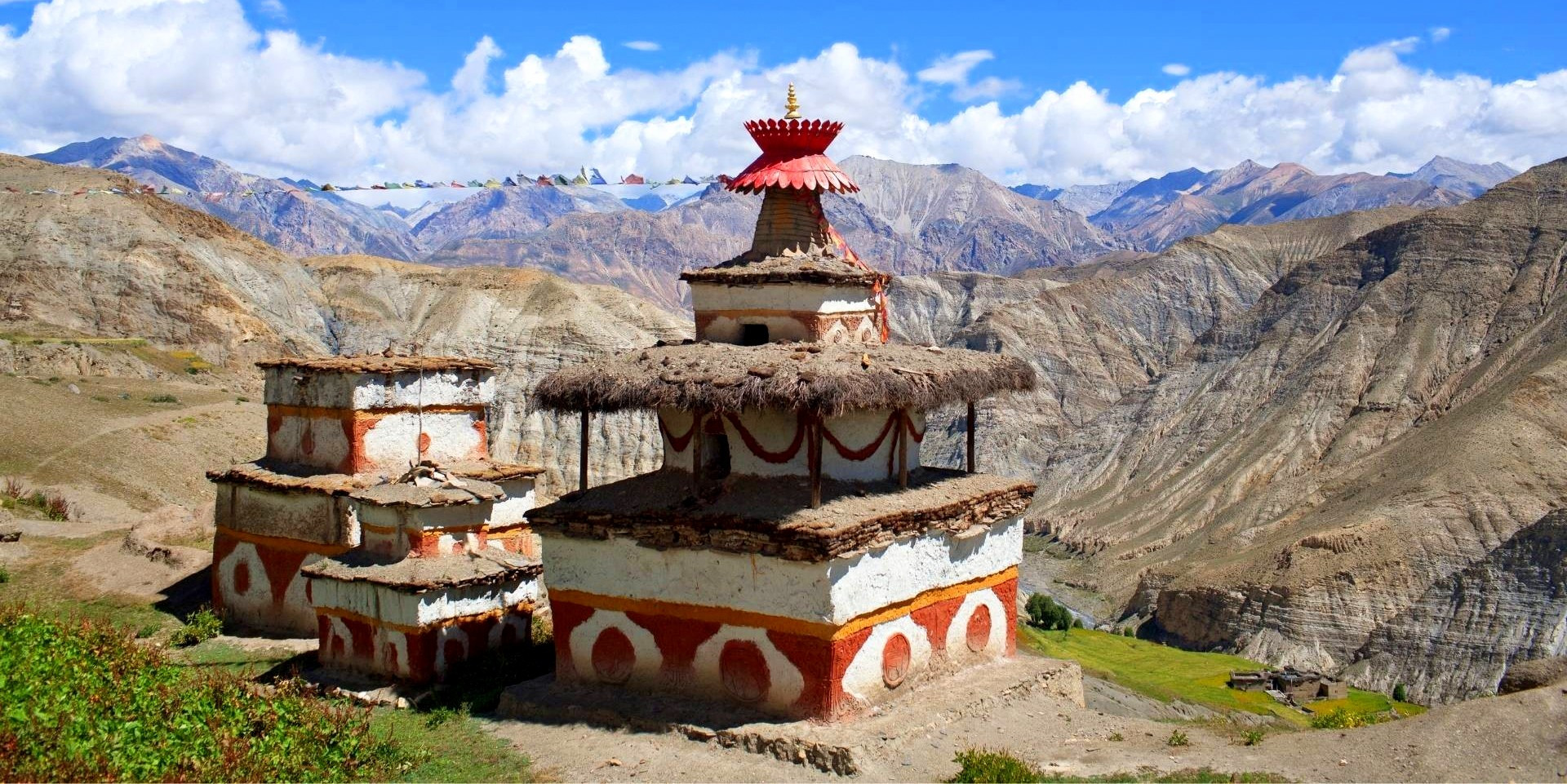
-
Untouched Natural Beauty: Dolpa is home to the Shey Phoksundo National Park, which features the stunning Shey Phoksundo Lake, one of Nepal's most beautiful and deepest lakes. The park's rugged and dramatic landscapes include towering peaks, deep canyons, and expansive alpine areas, making it a haven for trekkers seeking solitude and natural beauty.
-
Rich Tibetan Culture: Dolpa has preserved its traditional Tibetan culture more intact than almost anywhere else in Nepal. The region is dotted with ancient monasteries (gompa), including the famous Shey Monastery, where you can witness Buddhist monks engaged in daily rituals. The local people, known as Dolpopas, continue to live a life that revolves around agriculture, animal herding, and trading, much as they have for centuries.
-
Phoksundo Lake: A visit to Dolpa is incomplete without seeing the mesmerising Phoksundo Lake. Known for its aquamarine waters surrounded by cliffs and lush forests, the lake area offers breathtaking views and peaceful hikes. The lake is also considered sacred by the local Buddhist and Bon communities, adding a spiritual element to its natural beauty.
-
The Snow Leopard Territory: Dolpa is one of the few places in the world where you can potentially spot the elusive snow leopard in the wild, along with other wildlife like blue sheep and Himalayan tahr. The region's biodiversity is largely due to its remoteness and the varied habitats found within its borders.
-
Ancient Trade Routes: Dolpa sits along ancient salt trading routes between Tibet and Nepal. Trekking these historic paths offers a glimpse into the past and the harsh conditions traders endured. These routes are less travelled compared to other trekking paths in Nepal, providing a more solitary and introspective experience.
-
Unique Festivals and Spiritual Sites: The Dolpa region hosts unique festivals, like the Saldang festival, which features horse racing and traditional Tibetan dancing. Visiting during festival time allows deeper insight into the local customs and religious practices, particularly those of the Bon religion, which predates Buddhism in Tibet.
-
Challenging Treks: Dolpa offers some of the most challenging and rewarding treks in Nepal, such as the trek to the Shey Gompa, often referred to as the spiritual heart of Upper Dolpa. These treks are ideal for experienced adventurers seeking to test their limits in a truly remote environment.
Relax Getaways provides expertly guided tours to the Dolpa region, ensuring that travelers not only explore the stunning landscapes and cultural heritage safely but also gain a deep appreciation for the region’s unique ecological and spiritual significance. Our tours are designed with respect for local customs and aim to support conservation efforts while offering an authentic experience of this hidden Himalayan gem. Whether you're an avid trekker, a wildlife enthusiast, or a cultural explorer, discovering Dolpa with Relax Getaways is an unforgettable journey into one of the least accessible but most extraordinary parts of Nepal.
Khaptad National Park Bird Watching
Khaptad National Park is a gem hidden in the far western region of Nepal, known for its diverse ecosystems and tranquil landscapes. This lesser-known national park is an excellent destination for bird watchers and nature enthusiasts. Here’s why Khaptad birdwatching is a must-do activity for those visiting Nepal:
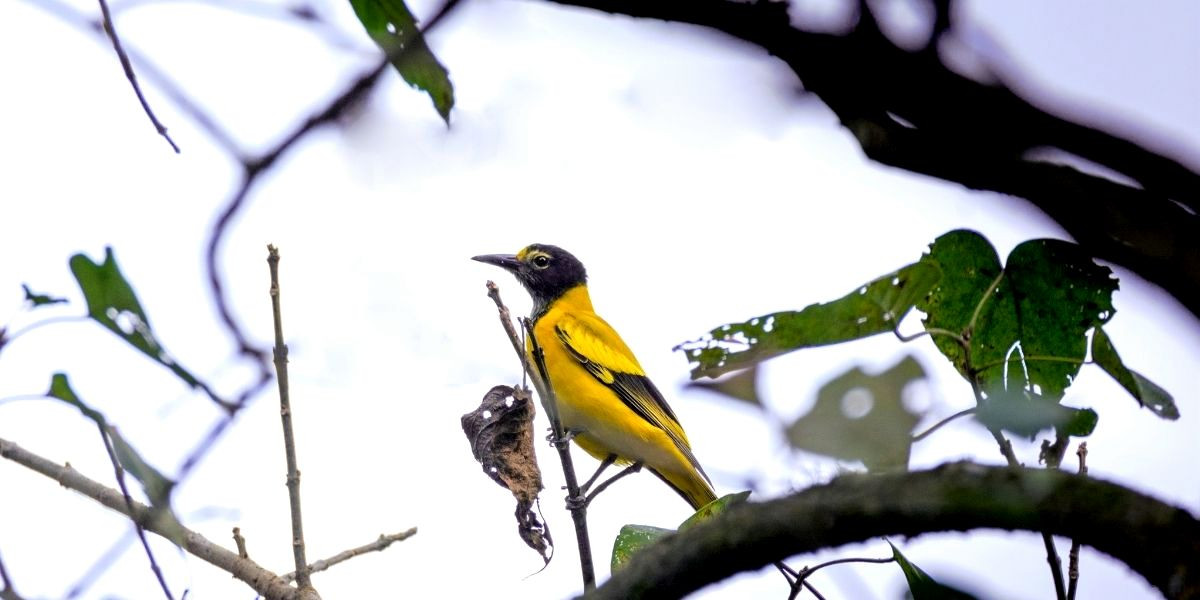
-
Rich Biodiversity: Khaptad National Park hosts a rich array of flora and fauna, with its diverse habitats ranging from subtropical forests at lower elevations to temperate forests at higher altitudes. The park is home to over 270 species of birds, making it a paradise for bird watchers. Among these are a variety of both resident and migratory species, including the beautiful Impeyan pheasant (the national bird of Nepal), the white-rumped vulture, and the Himalayan griffon.
-
Pristine and Peaceful Environment: Unlike more popular national parks in Nepal that can be crowded with tourists, Khaptad offers a peaceful natural retreat. Its secluded location means that visitors can enjoy bird watching and nature walks without the disturbances found in busier areas, allowing for a more intimate connection with nature.
-
Spectacular Natural Scenery: The park features a stunning landscape of rolling green hills, lush meadows, and dense forests, interspersed with clear streams and a variety of wildflowers during spring and summer. This picturesque setting not only provides a habitat for birds but also makes every hike and exploration a visually delightful experience.
-
Cultural and Spiritual Significance: Khaptad National Park is also known for its religious significance, with several Hindu temples located within the park, including the Khaptad Baba Ashram. The park is considered a sacred place by many, and local festivals and pilgrimages add a unique cultural dimension to any visit.
-
Opportunities for Comprehensive Exploration: Bird watchers and nature lovers can take guided walks through the park to spot rare and exotic bird species, while also enjoying the chance to see other wildlife. The park’s rich biodiversity includes various species of orchids and medicinal herbs, some of which are endemic to the region.
-
Accessibility and Visitor Services: Khaptad National Park is accessible via a flight from Kathmandu to Dhangadhi, followed by a road journey and a hike. This journey into the remote wilderness is part of the adventure. While facilities in and around Khaptad are basic compared to more developed areas, they are adequate for the needs of most travellers, providing an authentic experience of rural Nepal.
Relax Getaways specialises in organising bird watching tours to Khaptad National Park, offering expert guides who are knowledgeable about the local avian species and the best spots for sightings. Our tours are designed for enthusiasts who appreciate off-the-beaten-path adventures and aim to provide a comprehensive nature experience. With Relax Getaways, you’ll not only enjoy the exceptional bird watching in Khaptad but also embrace the tranquillity and beauty of one of Nepal’s most serene and pristine environments.
From the breathtaking heights of Everest and Annapurna to the cultural wealth of Kathmandu and Bhaktapur, Nepal offers a stunningly diverse range of experiences. Whether you are searching for exciting excursions, peaceful natural beauty, or deep spiritual experience, every place offers an original view of the country's varied attractions. Nepal offers every visitor a rich experience with its friendly welcome and lively customs. With meticulously planned itineraries and expert guidance, Relax Destination assures you a deeply immersive and quite memorable visit to Nepal. For an unforgettable journey, welcome the adventure, historical depth, and natural beauty of Nepal.
FAQs for 20 Best Places to Visit in Nepal
Q: What is the best time to visit Nepal?
A: The best time to visit Nepal is during the spring (March to May) and autumn (September to November) seasons when the weather is clear and dry, making it ideal for trekking and sightseeing.
Q: Do I need a visa to visit Nepal?
A: Most foreign nationals require a visa to enter Nepal, which can be obtained on arrival at Tribhuvan International Airport in Kathmandu and at various land borders. It's advisable to check the latest visa requirements from official sources before your trip.
Q: What are the must-see places in Kathmandu Valley?
A: In Kathmandu Valley, must-see places include the historic Kathmandu Durbar Square, the stupa of Swayambhunath (the Monkey Temple), and the city of Bhaktapur for its well-preserved medieval art and architecture.
Q: Is trekking in Nepal suitable for beginners?
A: Yes, there are several treks suitable for beginners, such as the Poon Hill trek and the Langtang Valley trek, which offer moderate trails with no extreme altitude gains. However, proper preparation and physical fitness are recommended.
Q: How should I prepare for high-altitude treks like Everest Base Camp or Annapurna Base Camp?
A: Preparation should include physical training, acquiring appropriate gear, and understanding altitude sickness and its prevention. It's also advisable to plan for adequate acclimatisation days within your trek.
Q: Are there any cultural customs I should be aware of when visiting Nepal?
A: Nepali culture is diverse, but general customs include removing shoes before entering homes or temples, not touching people with your feet, and using your right hand to eat and receive items.
Q: What are the accommodation options like in Nepal?
A: Nepal offers a range of accommodation options, from luxury hotels in major cities to basic teahouses in trekking regions, catering to different budgets and preferences.
Q: Can I use my credit cards in Nepal?
A: Credit cards are accepted in many hotels, restaurants, and shops in urban areas, but it’s advisable to carry cash, especially in remote trekking areas where ATMS and card facilities may be scarce.
Q: What should I pack for a trip to Nepal?
A: Packing should depend on the season and activities planned. Essential items include sturdy footwear, warm clothing for the mountains, a rain jacket, sun protection, a first aid kit, and any necessary medications.
Q: Is it safe to travel in Nepal?
A: Nepal is generally safe for travellers. Common precautions should be taken, especially in crowded areas. For trekkers, it's essential to stay informed about weather conditions and potential hazards.
For the Nepal tour, please click here.
If you are looking for different kinds of Nepal Tours or Trekking Packages, feel free to contact us.
